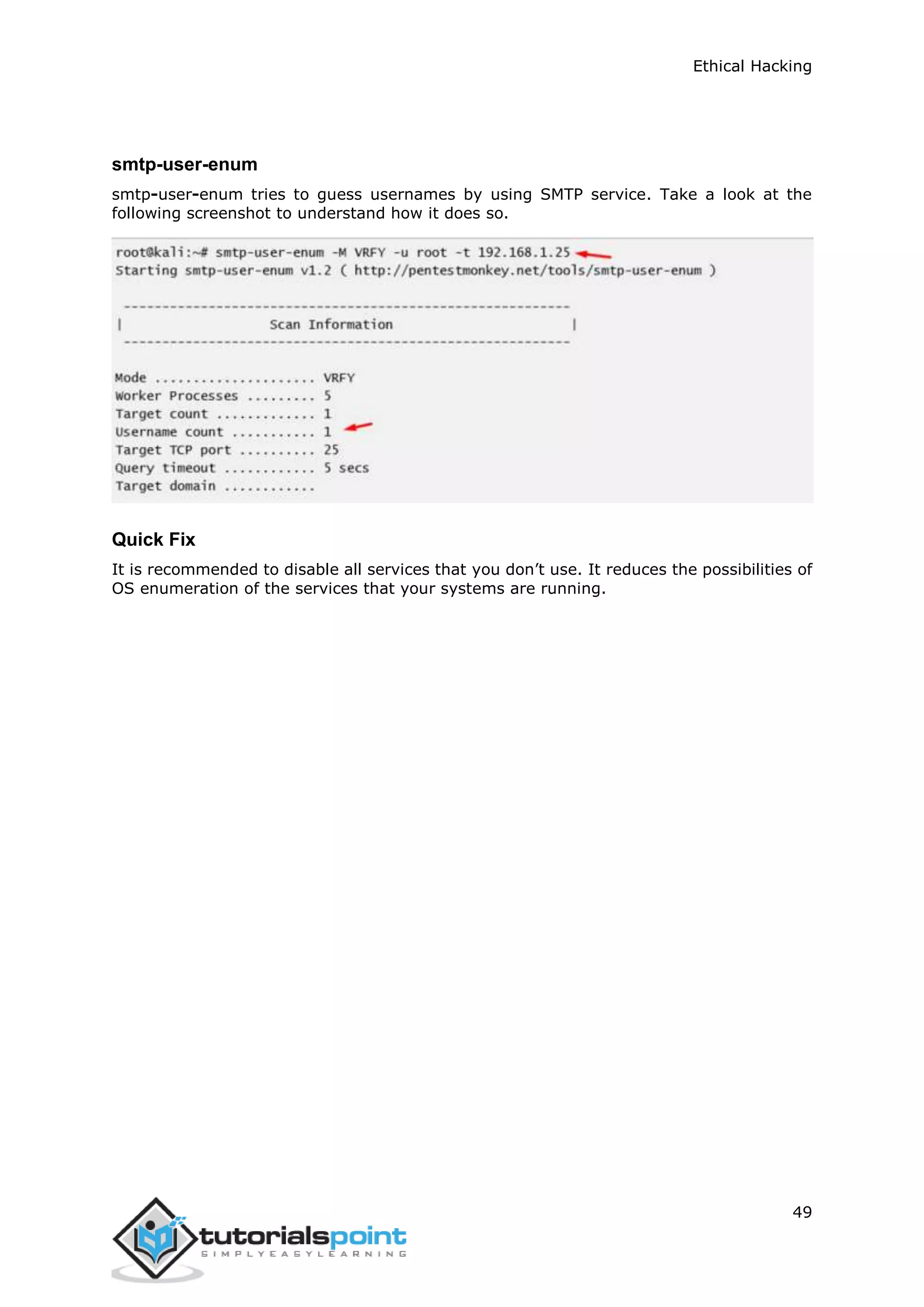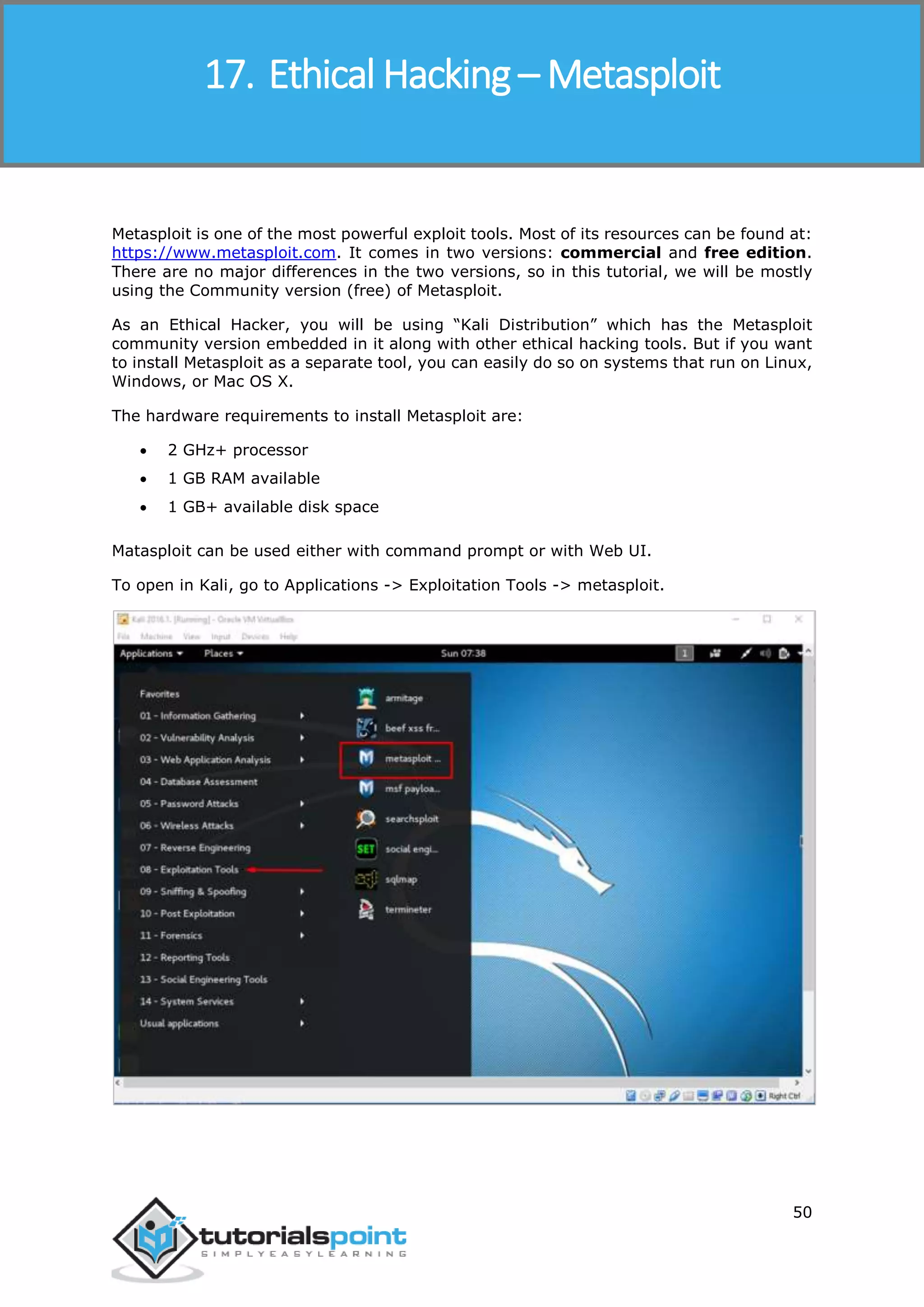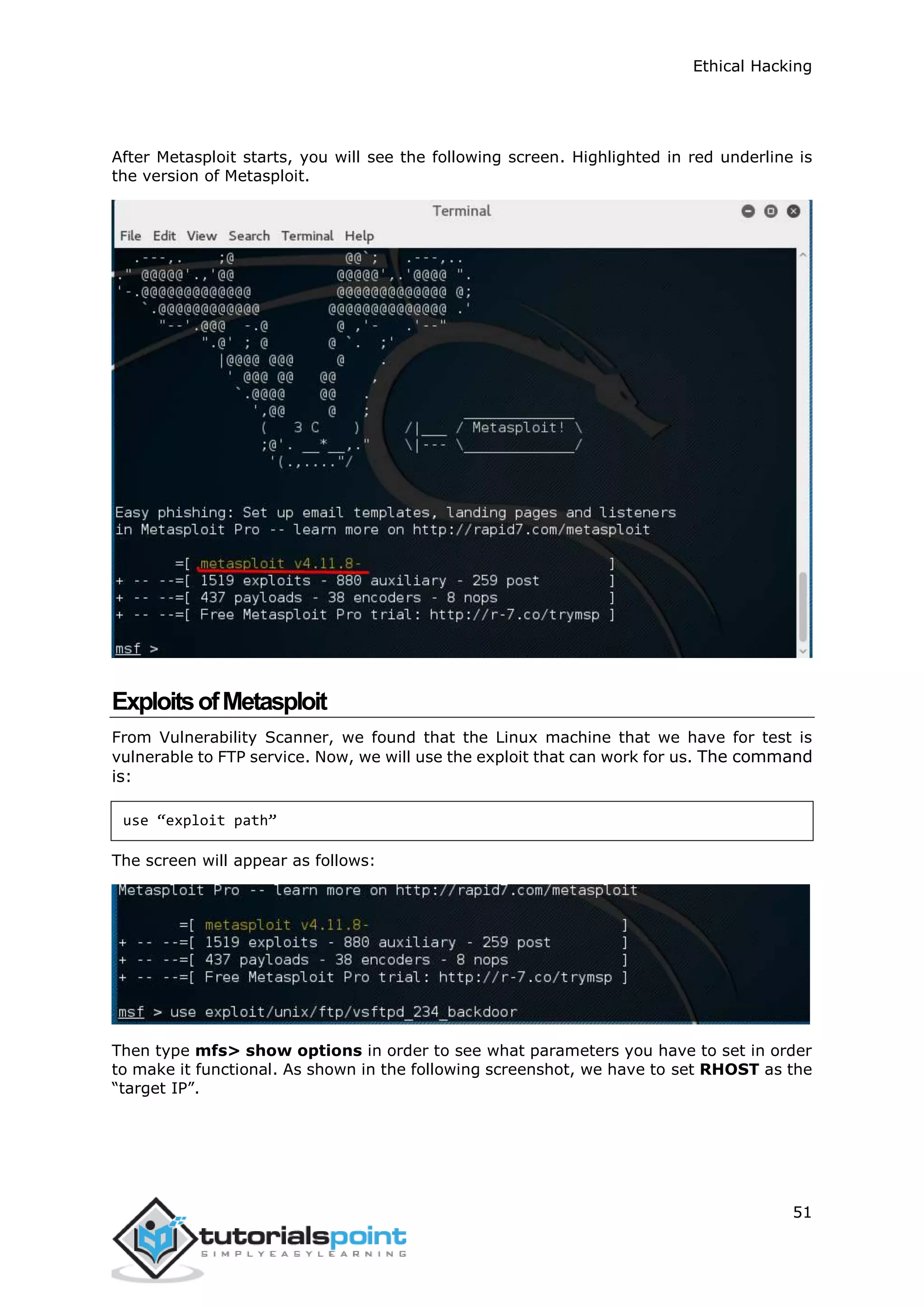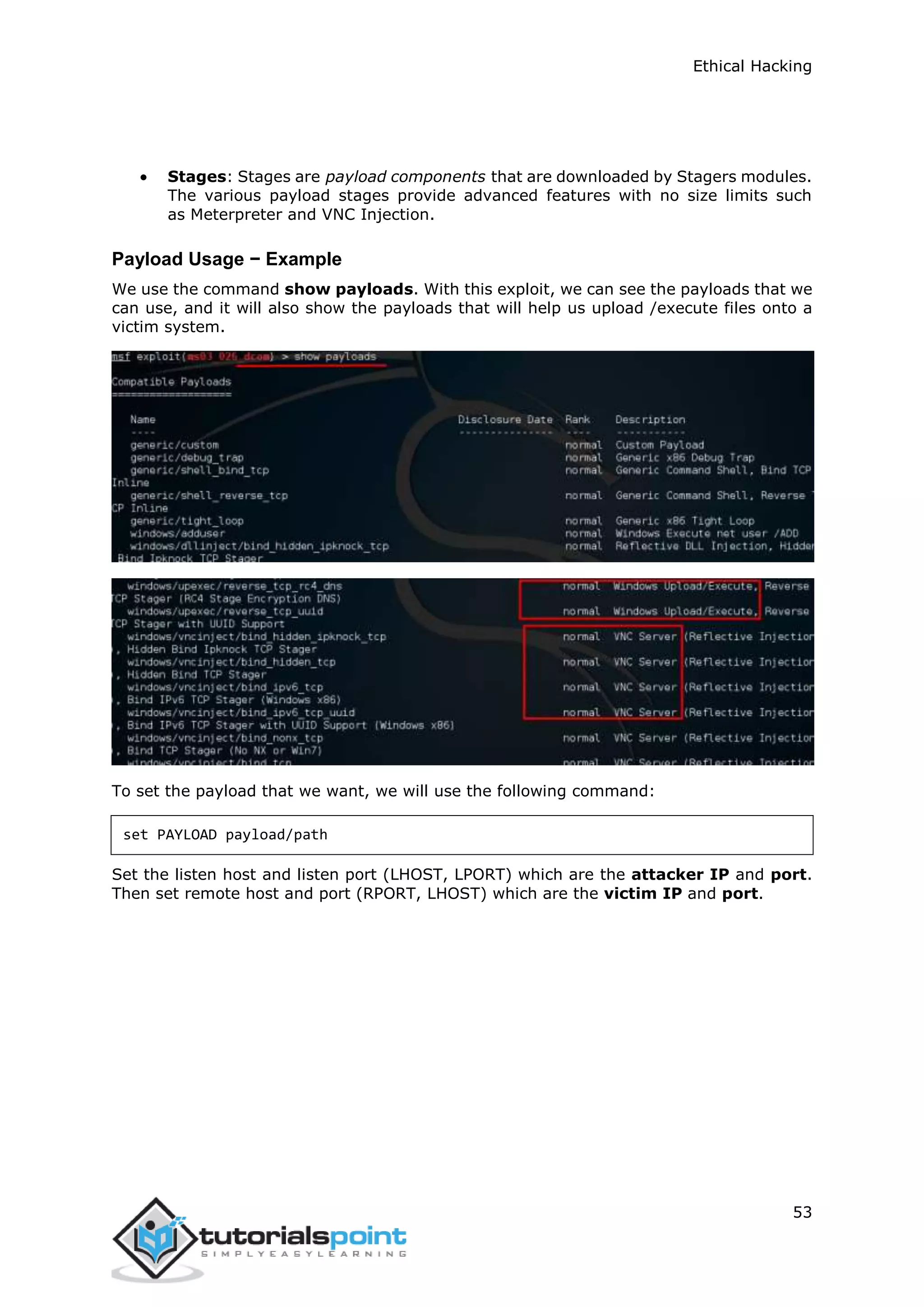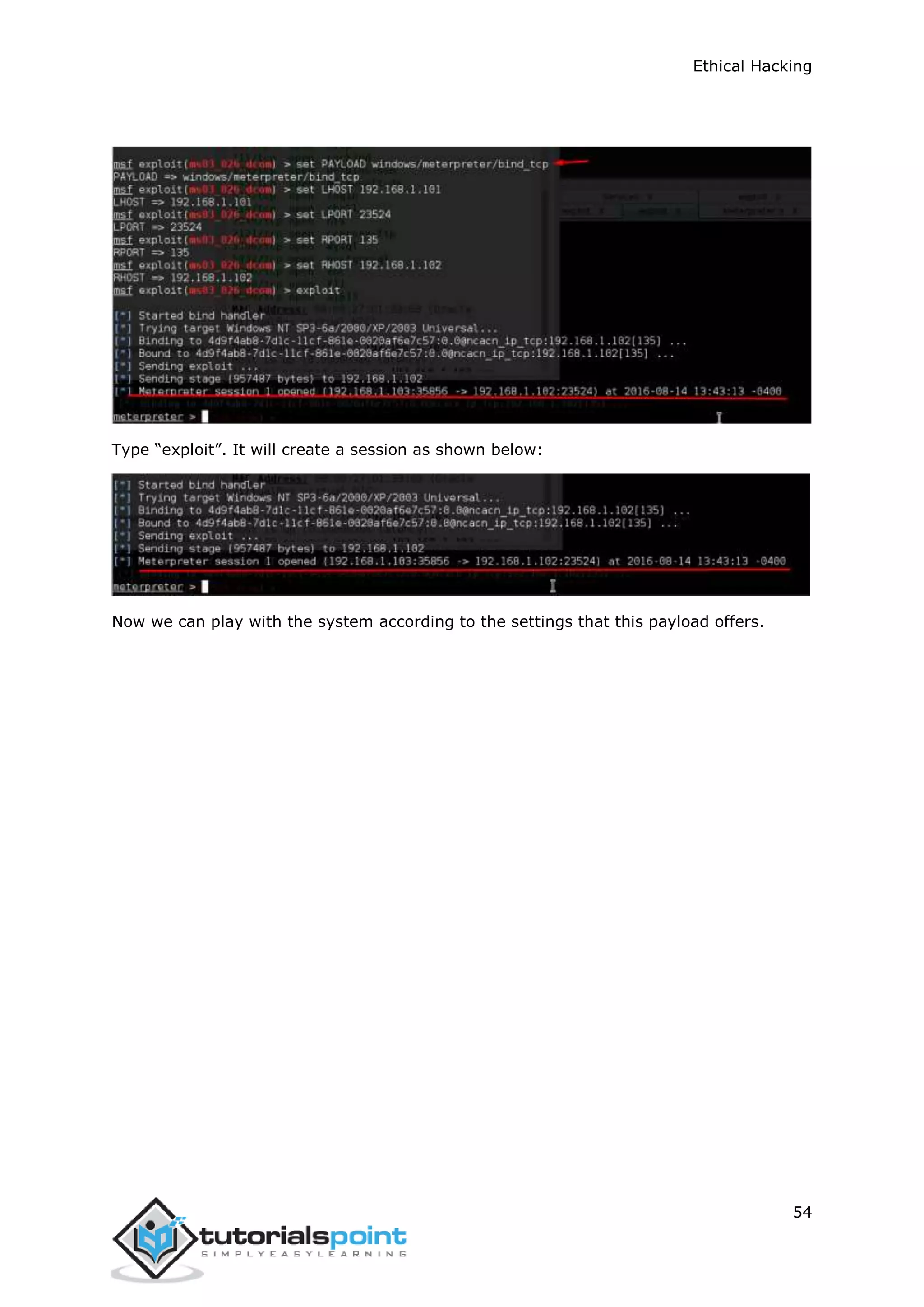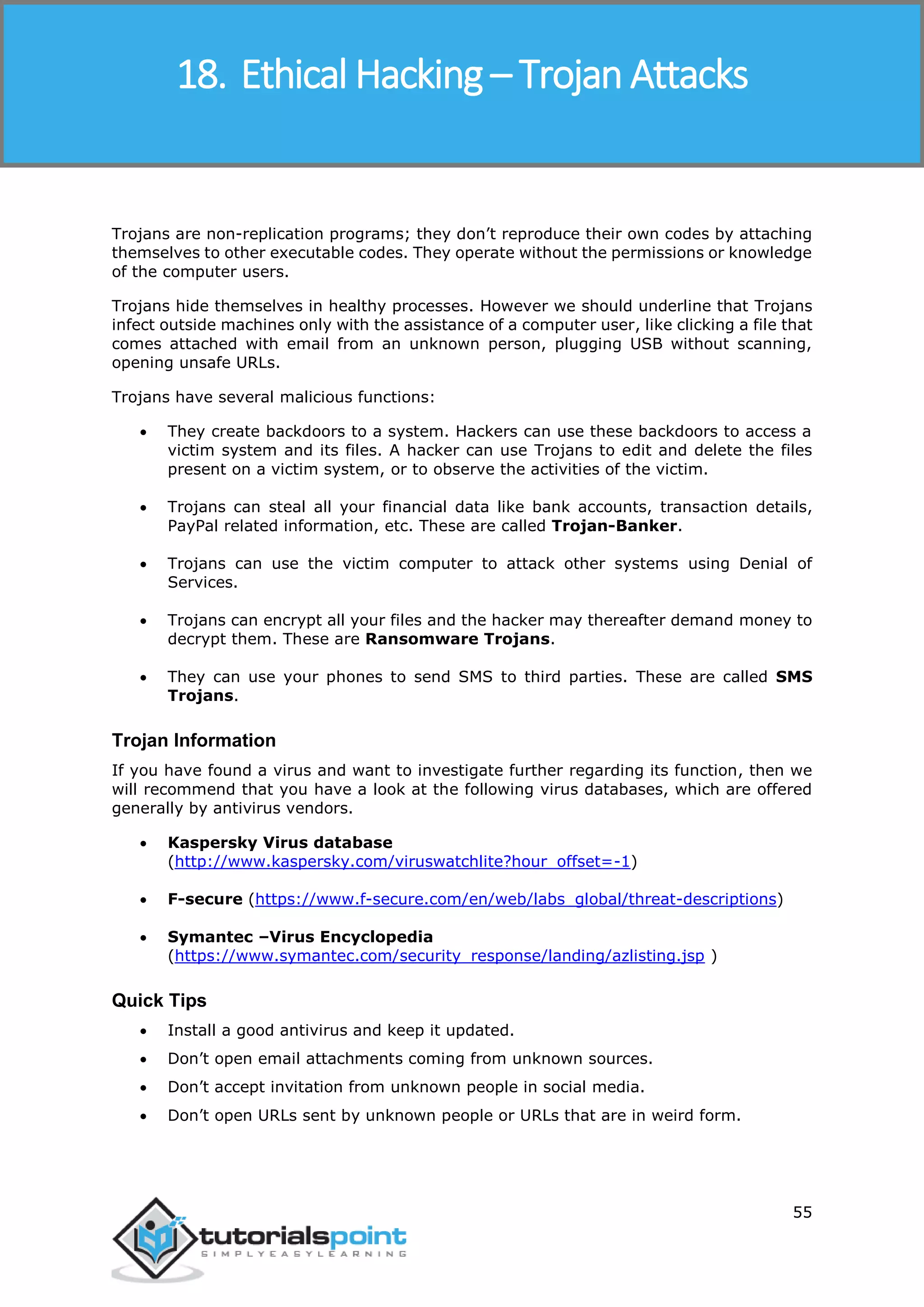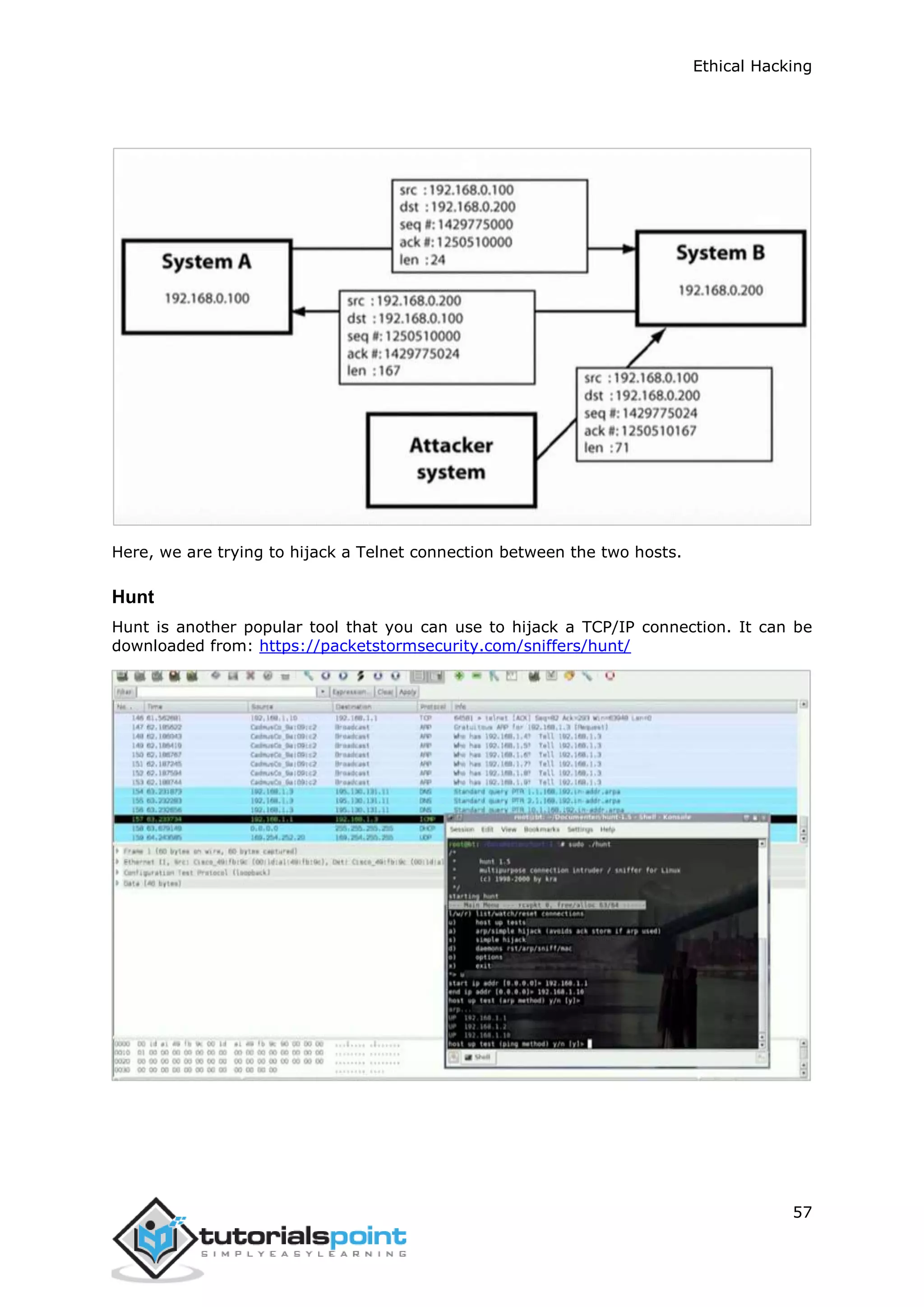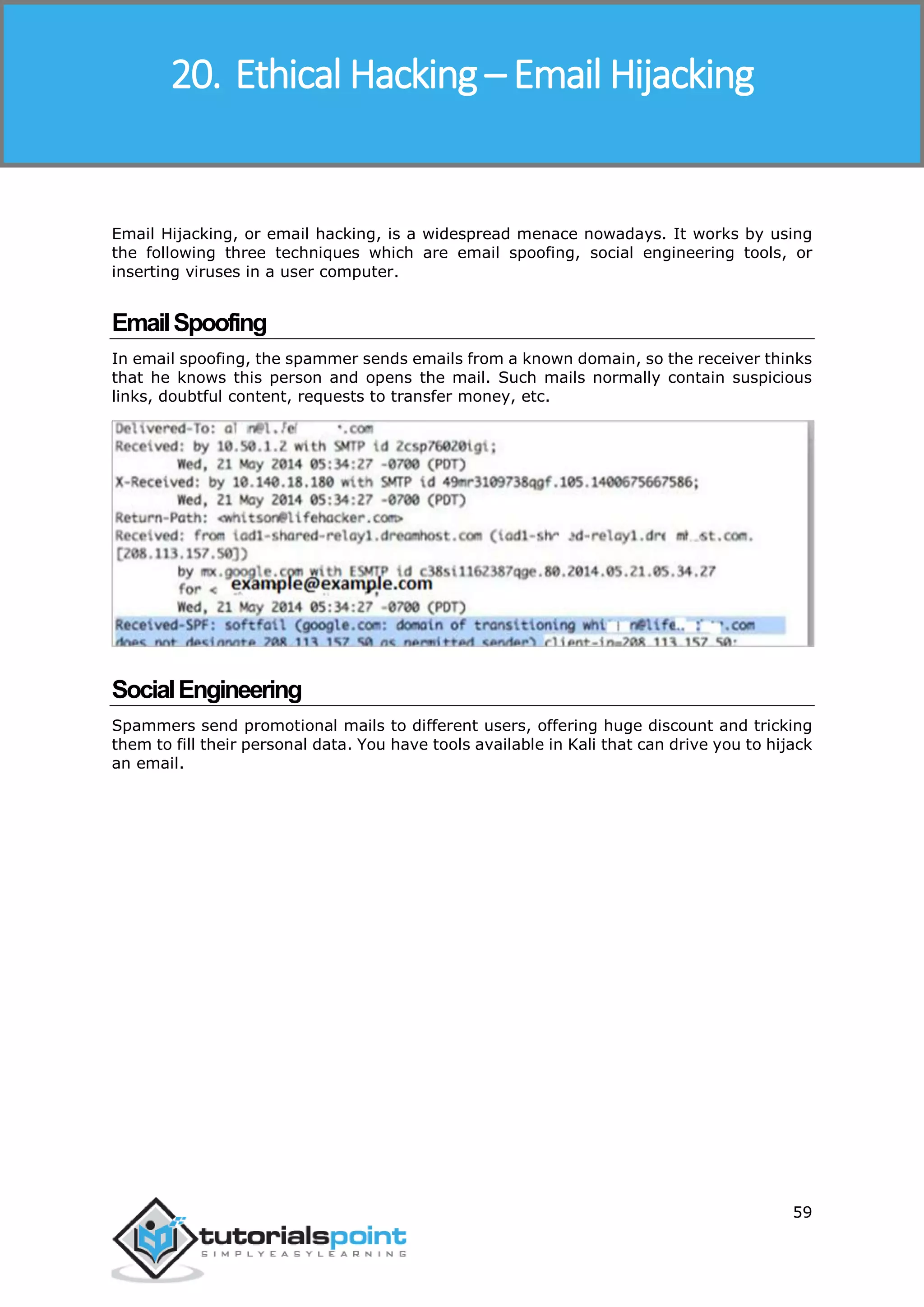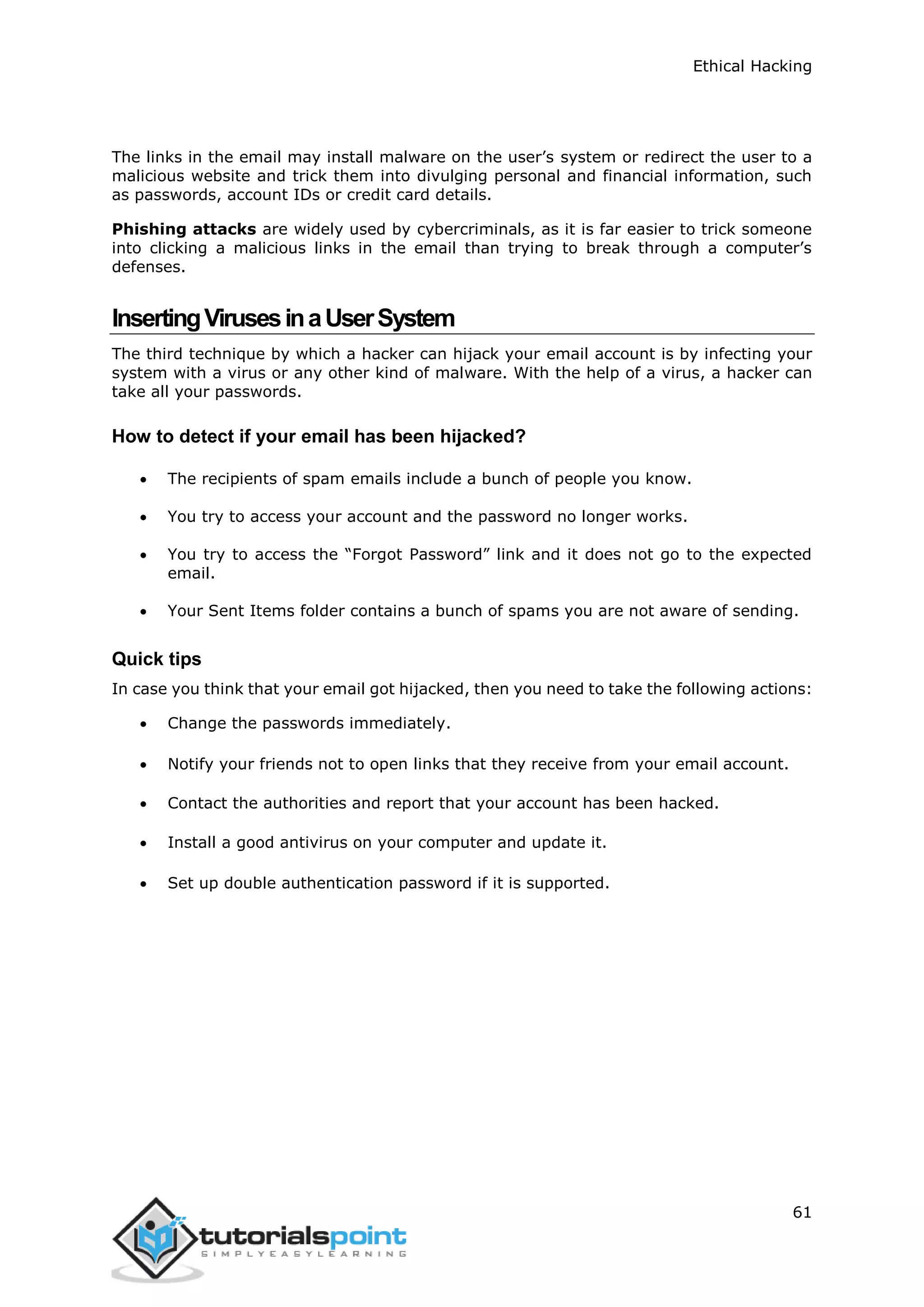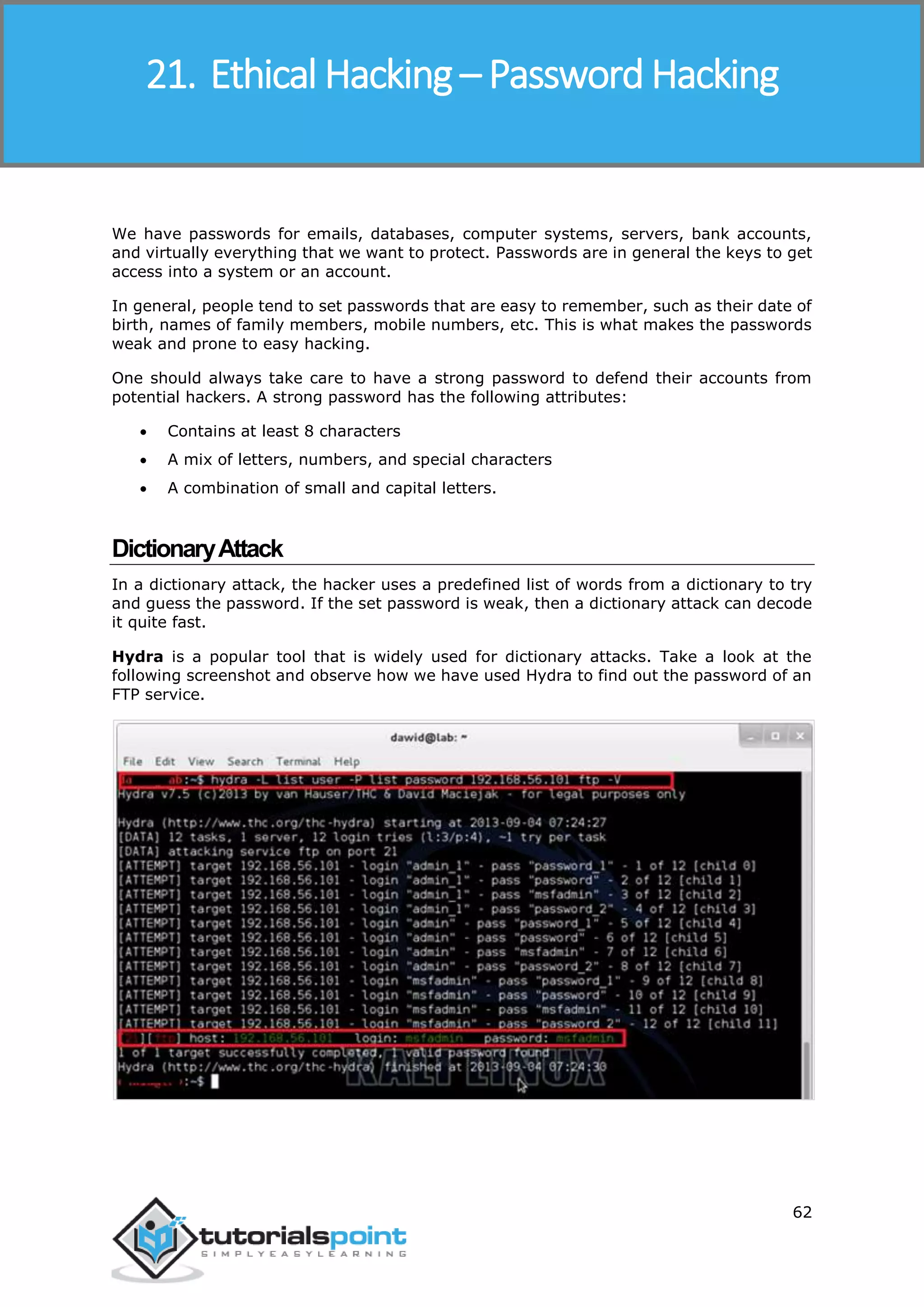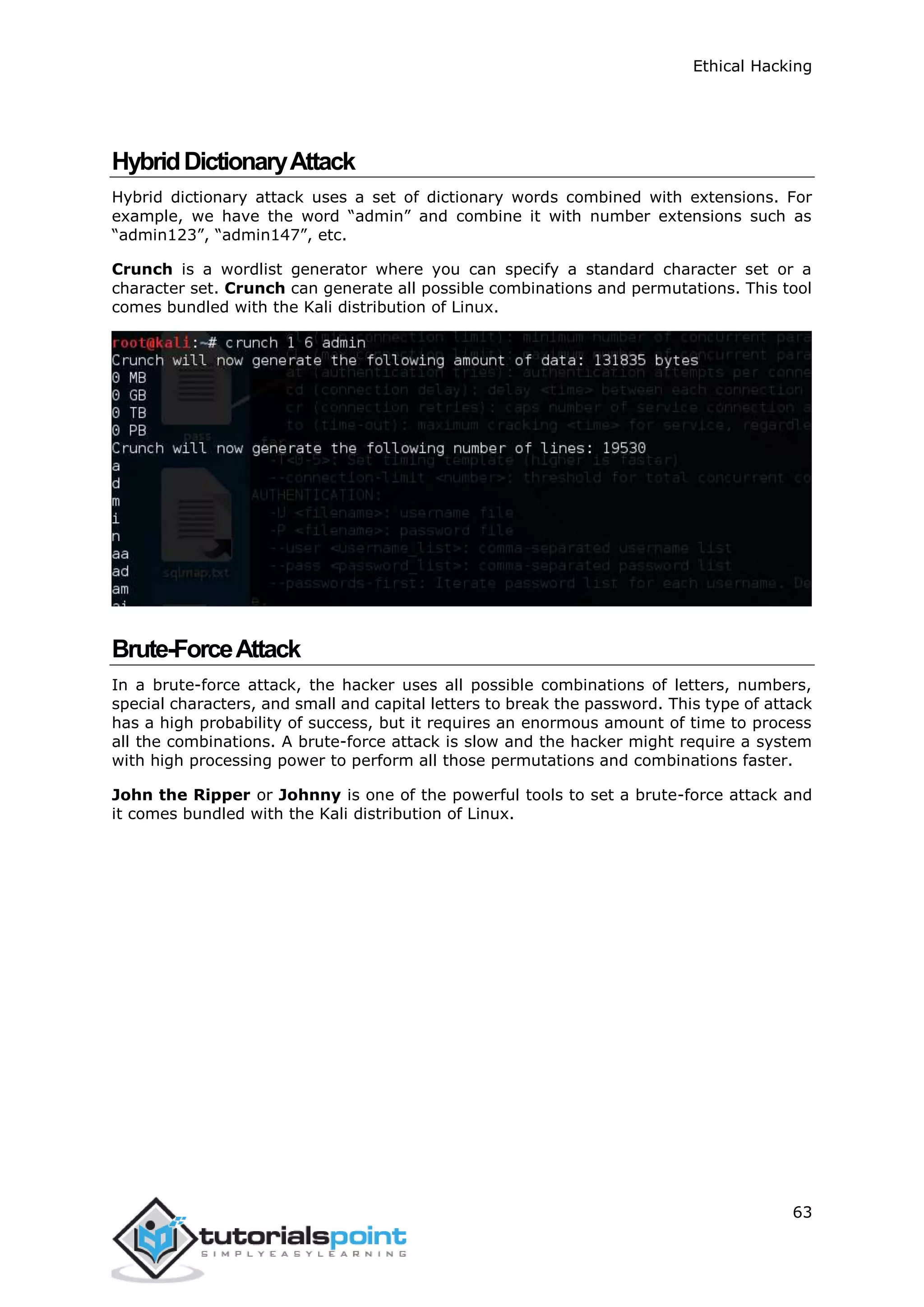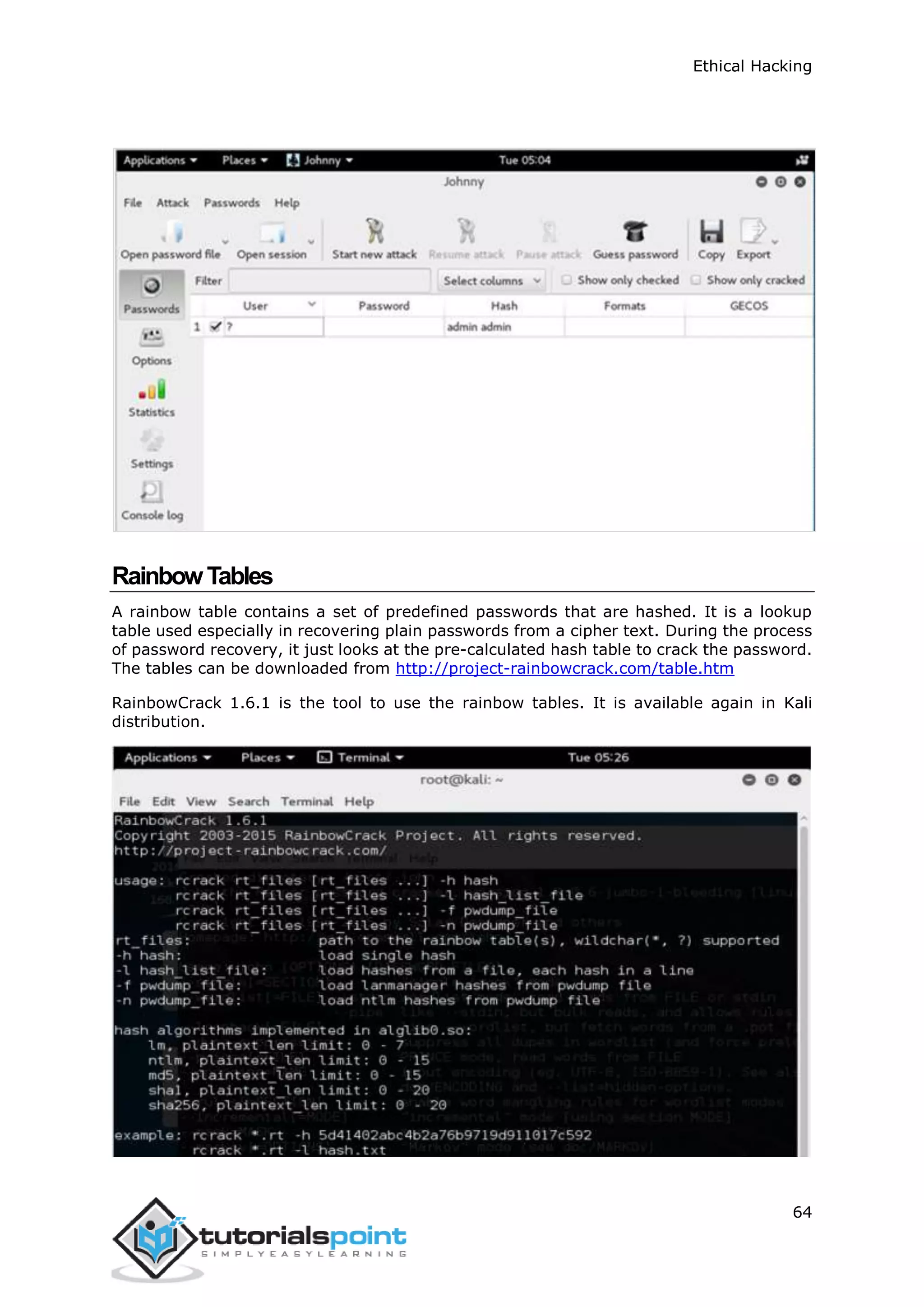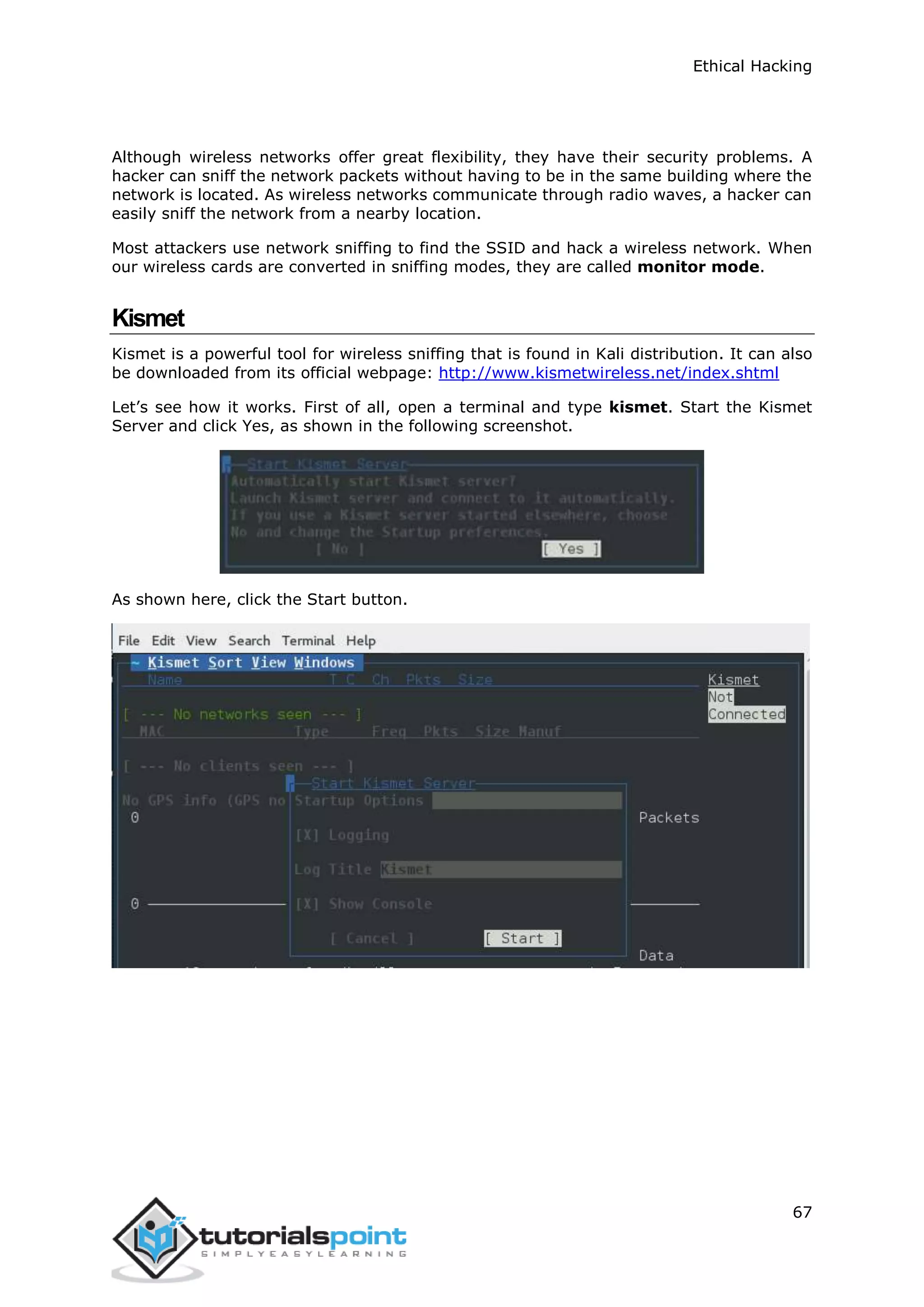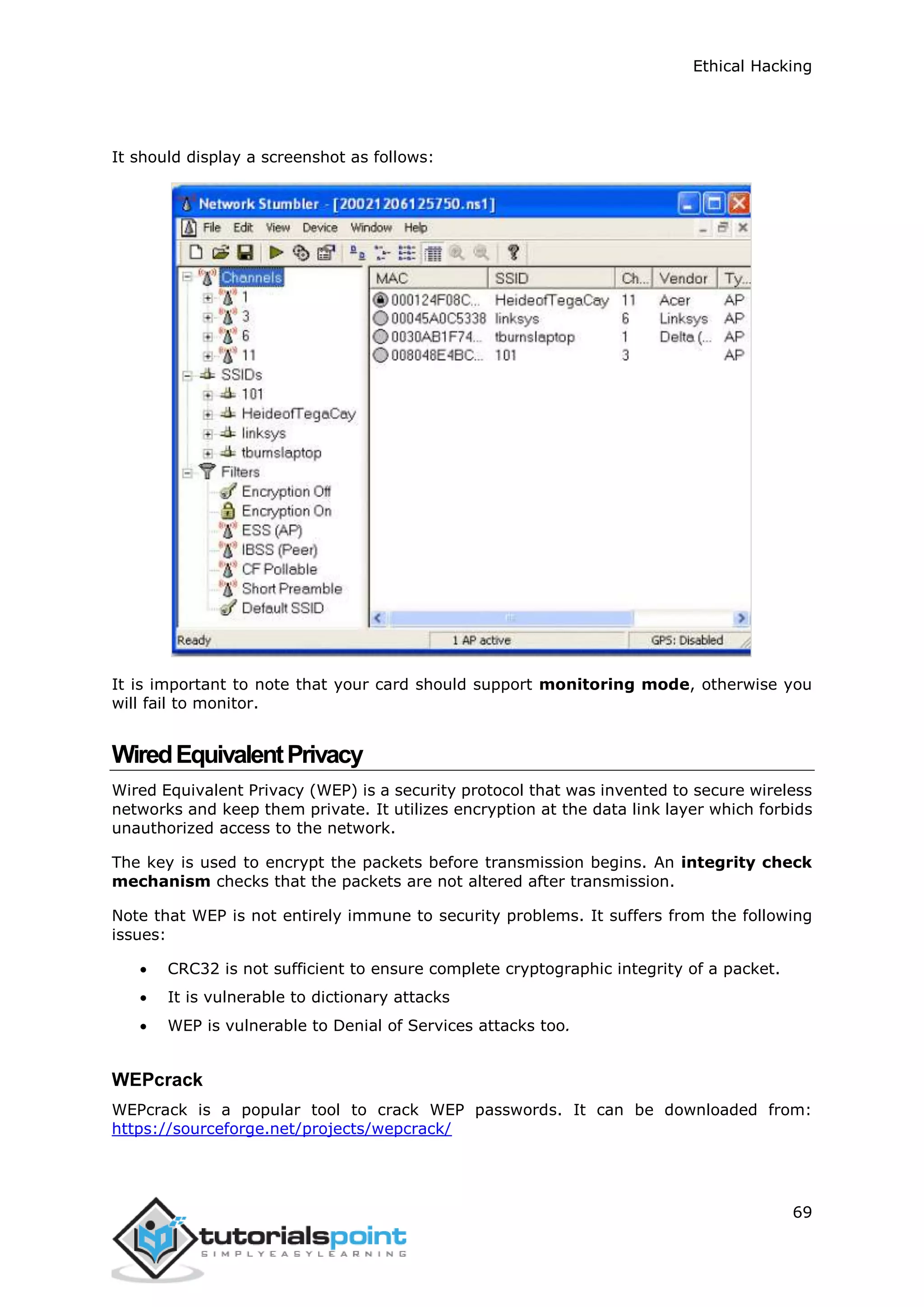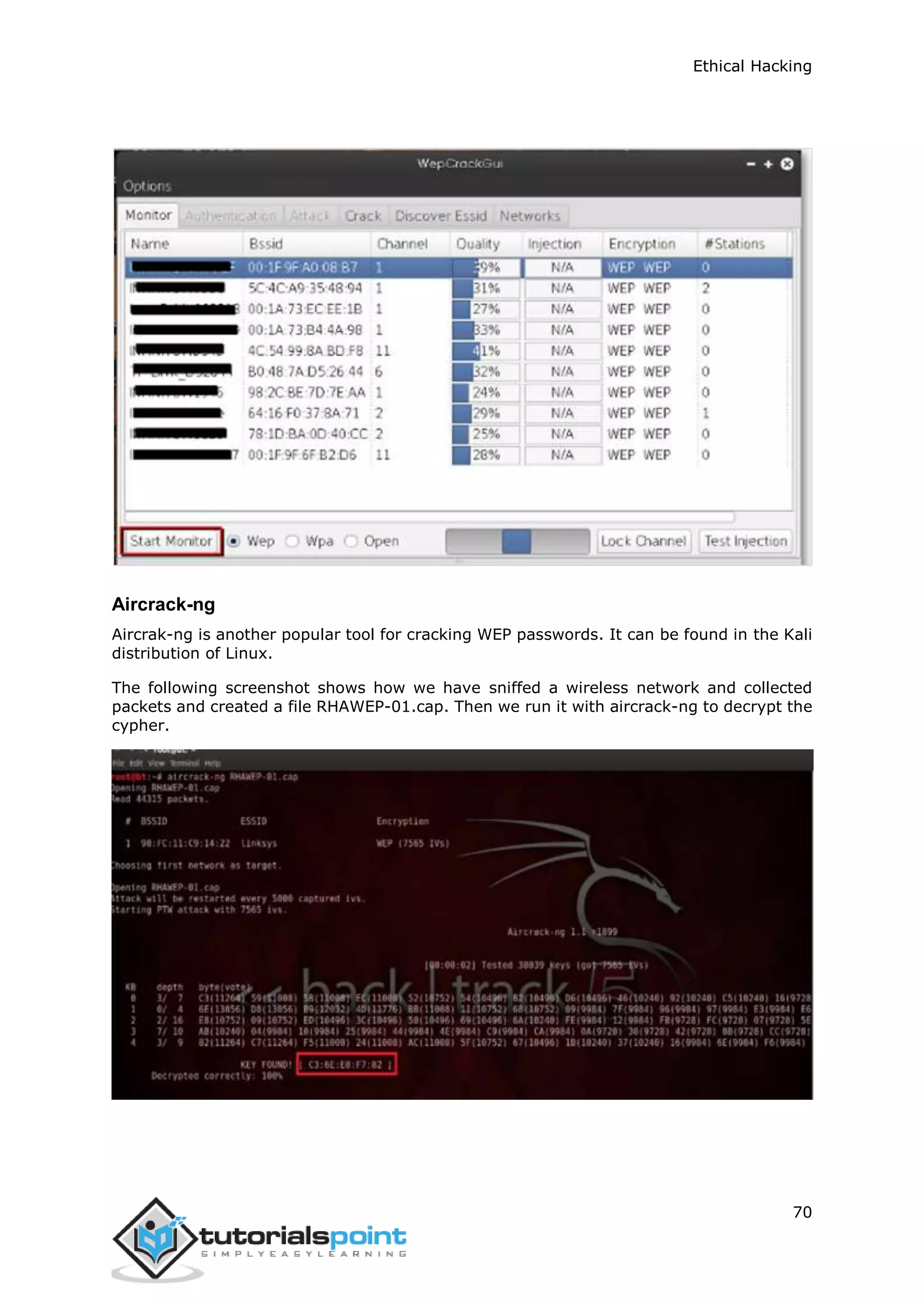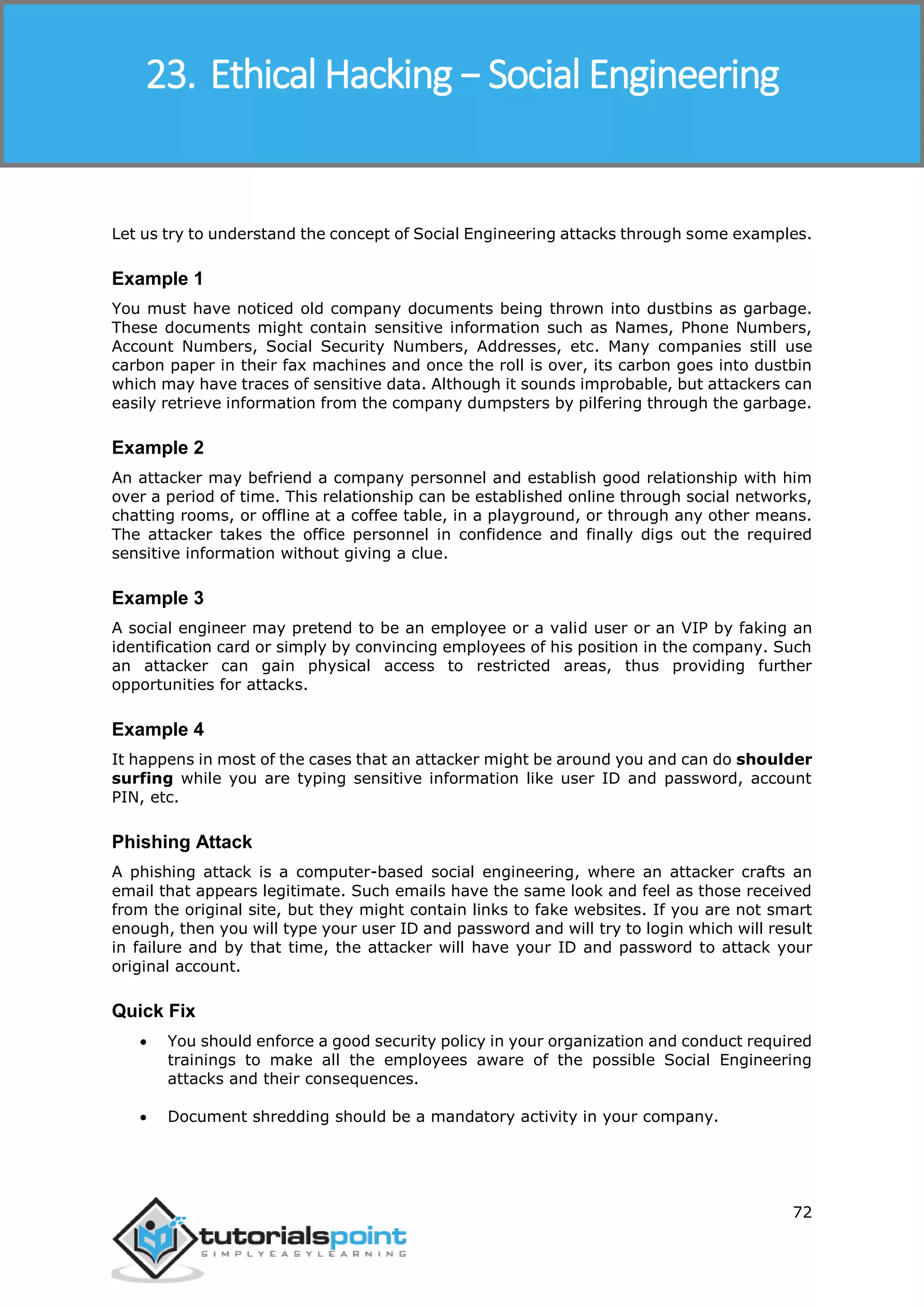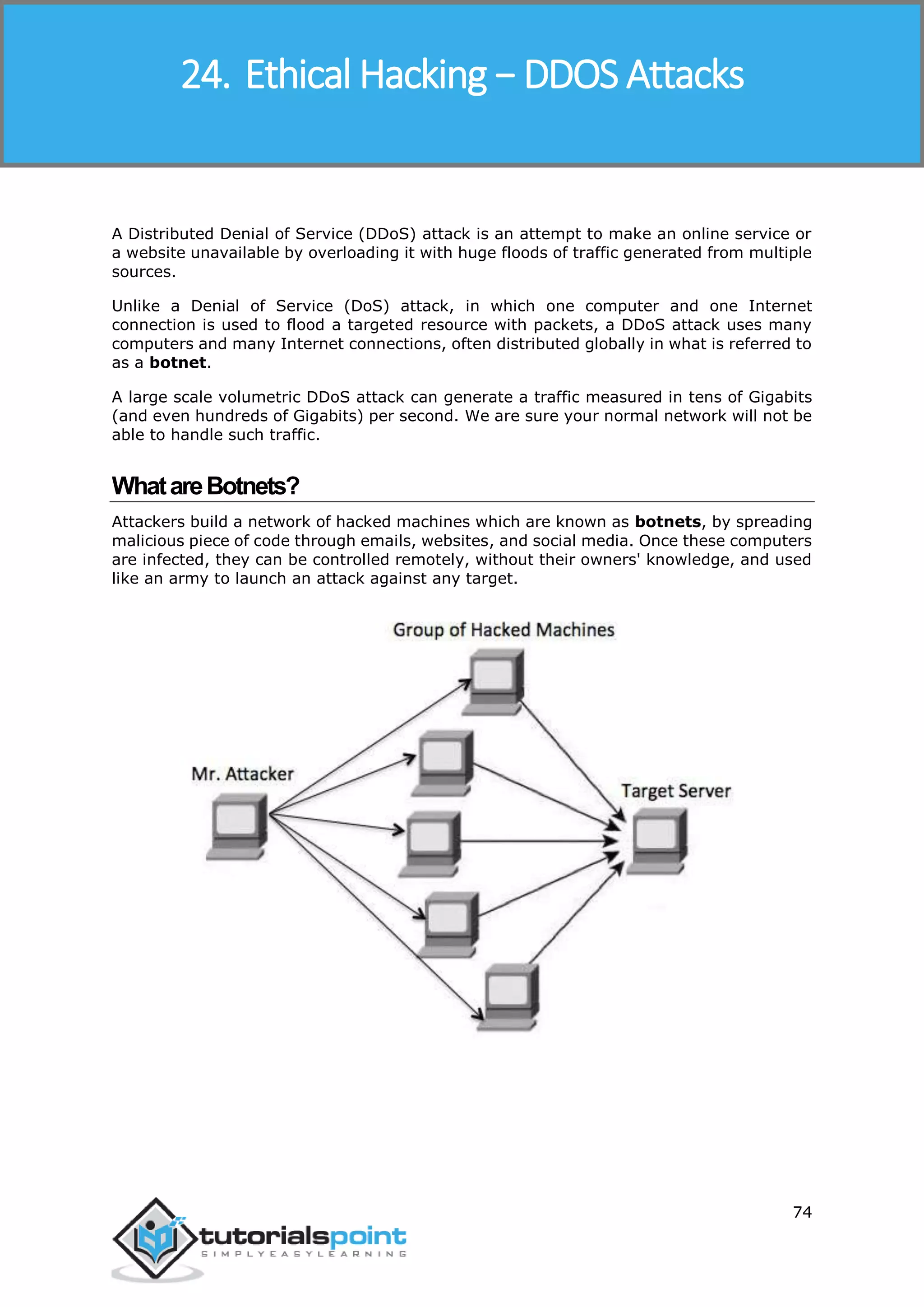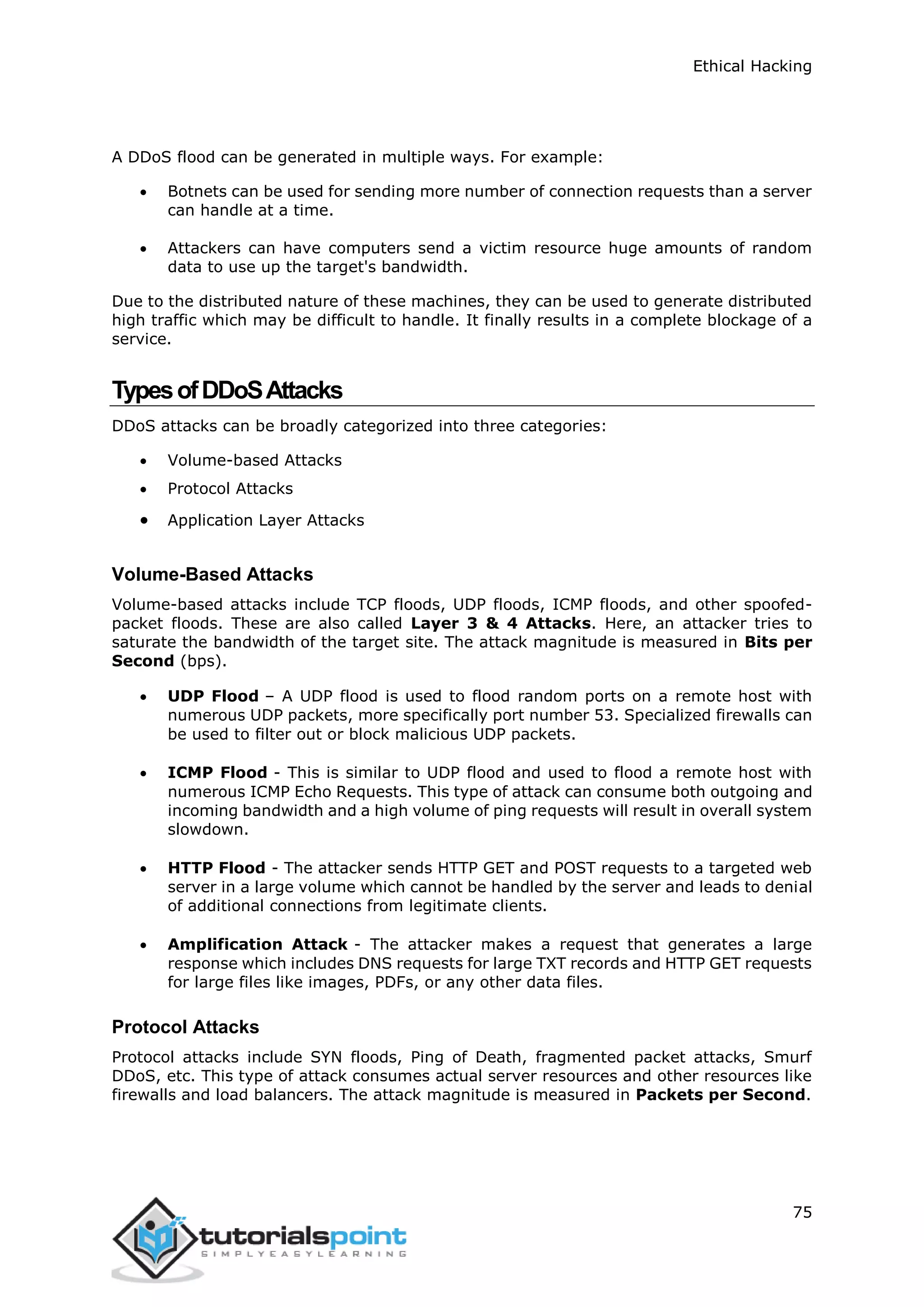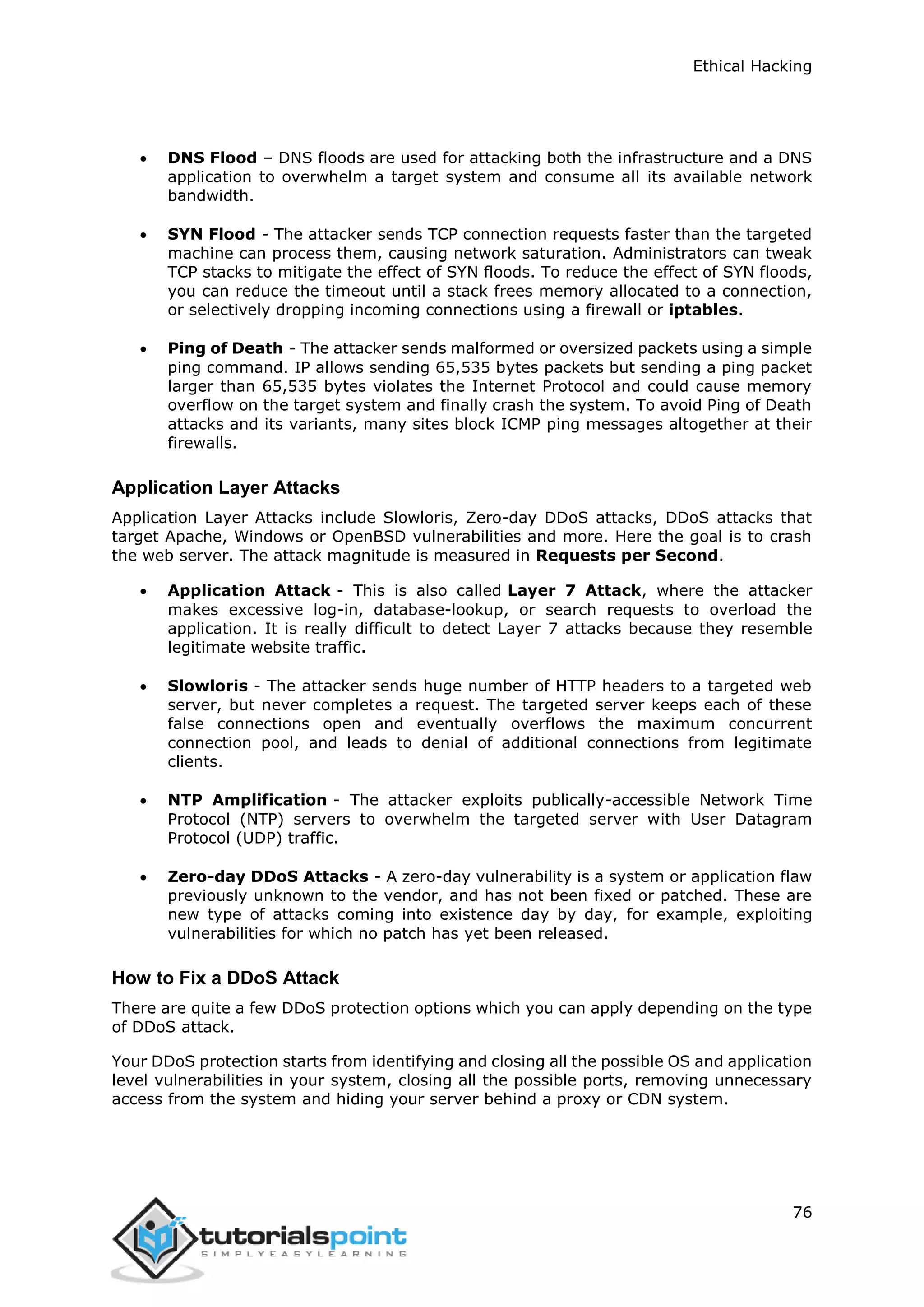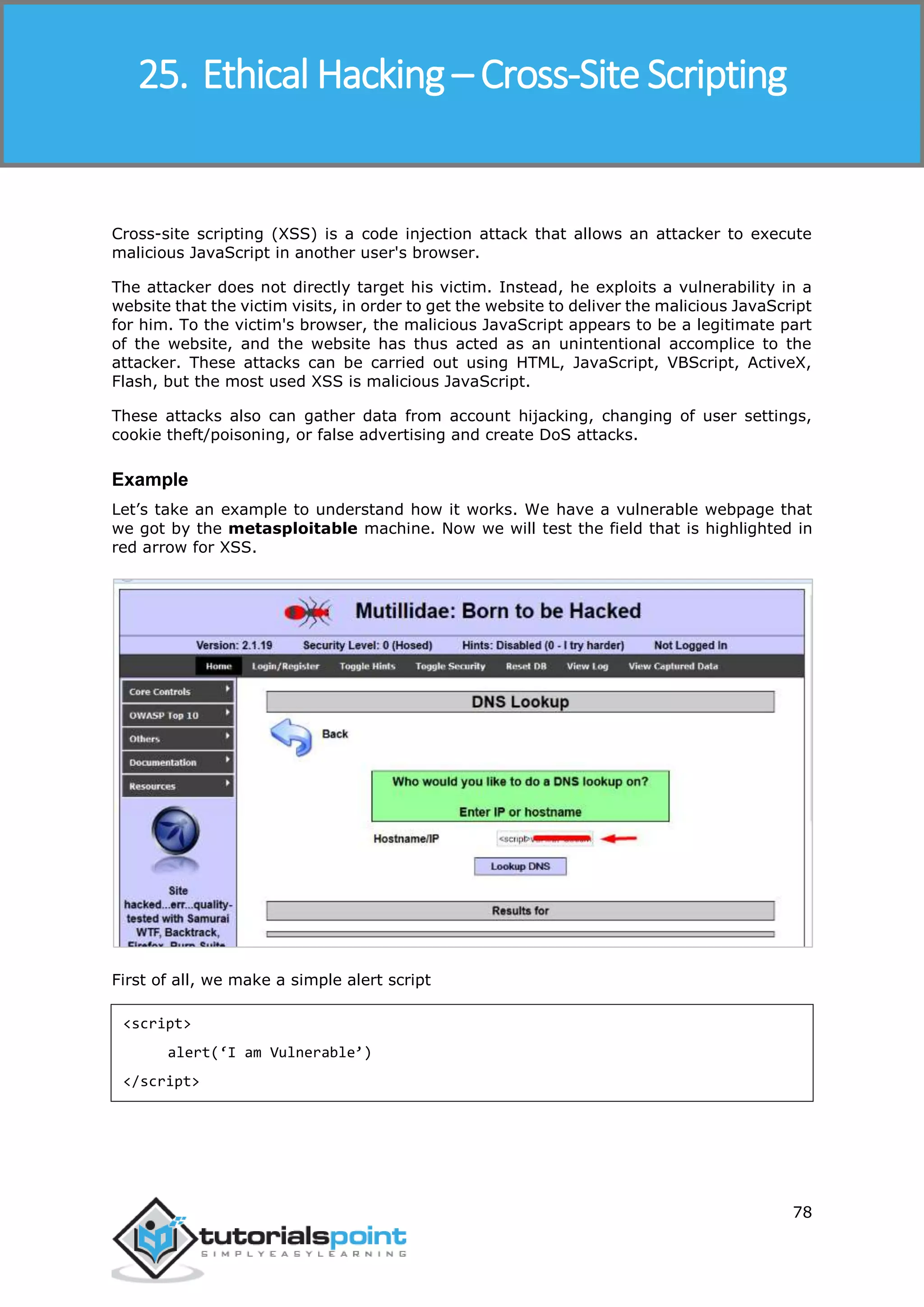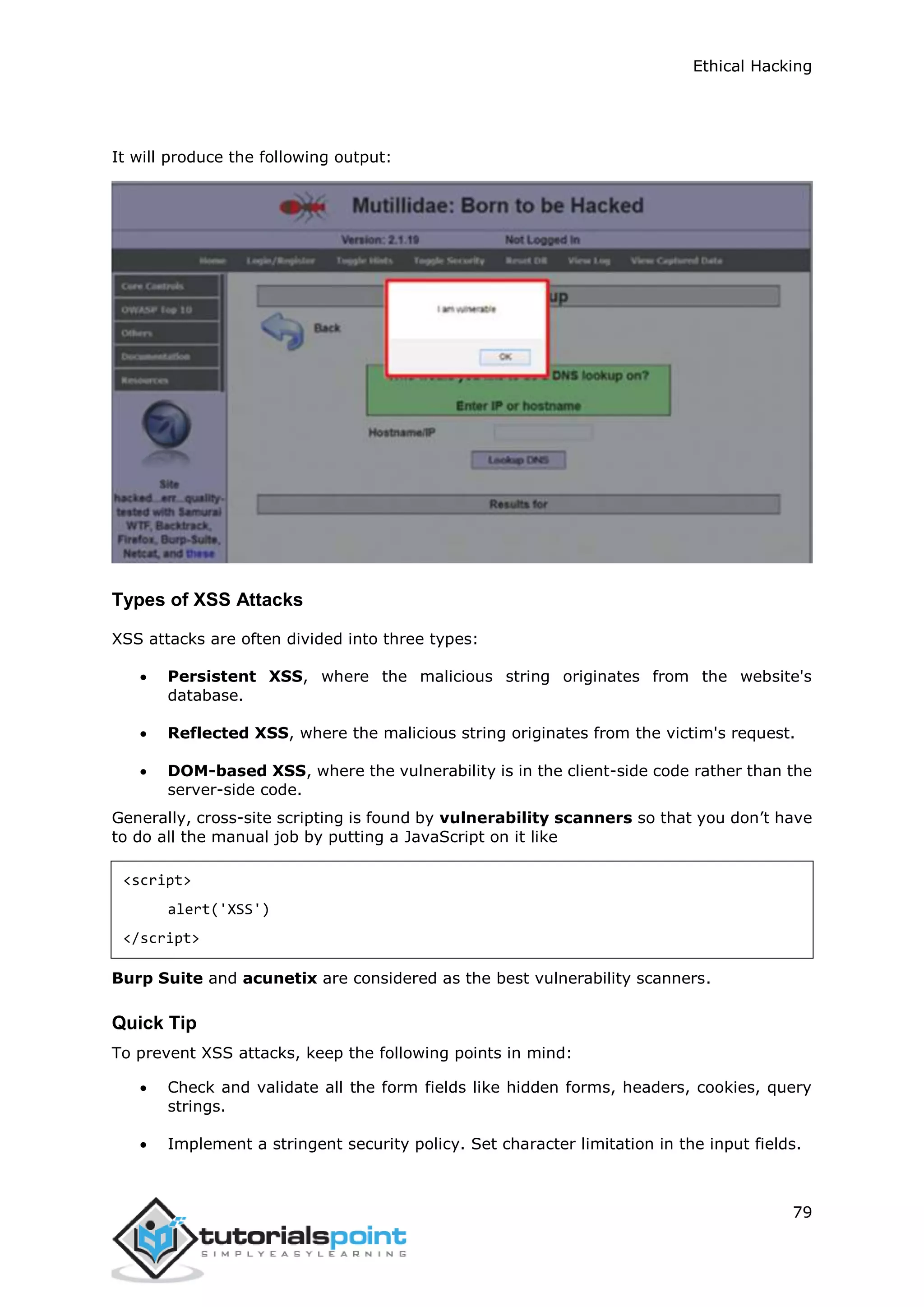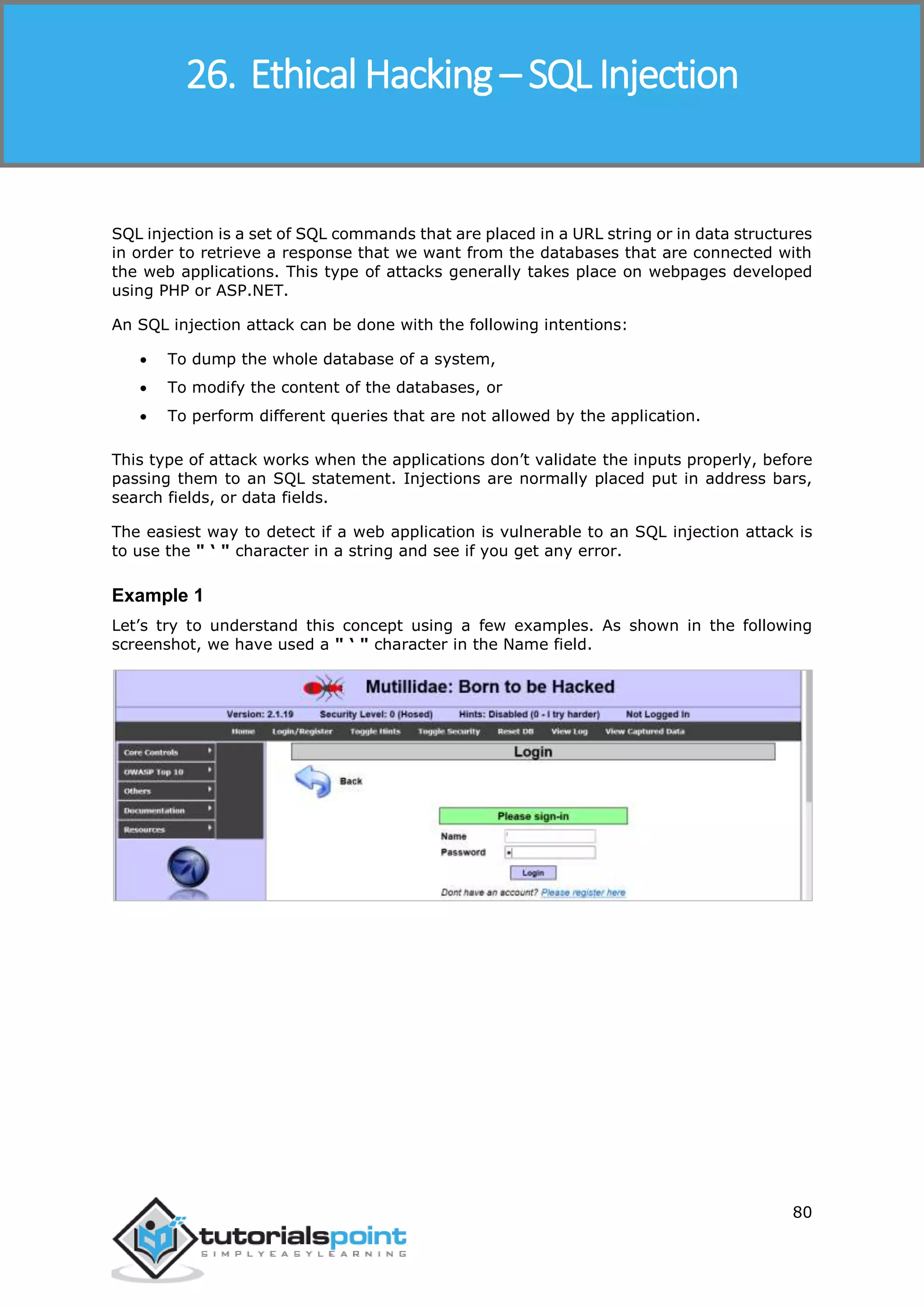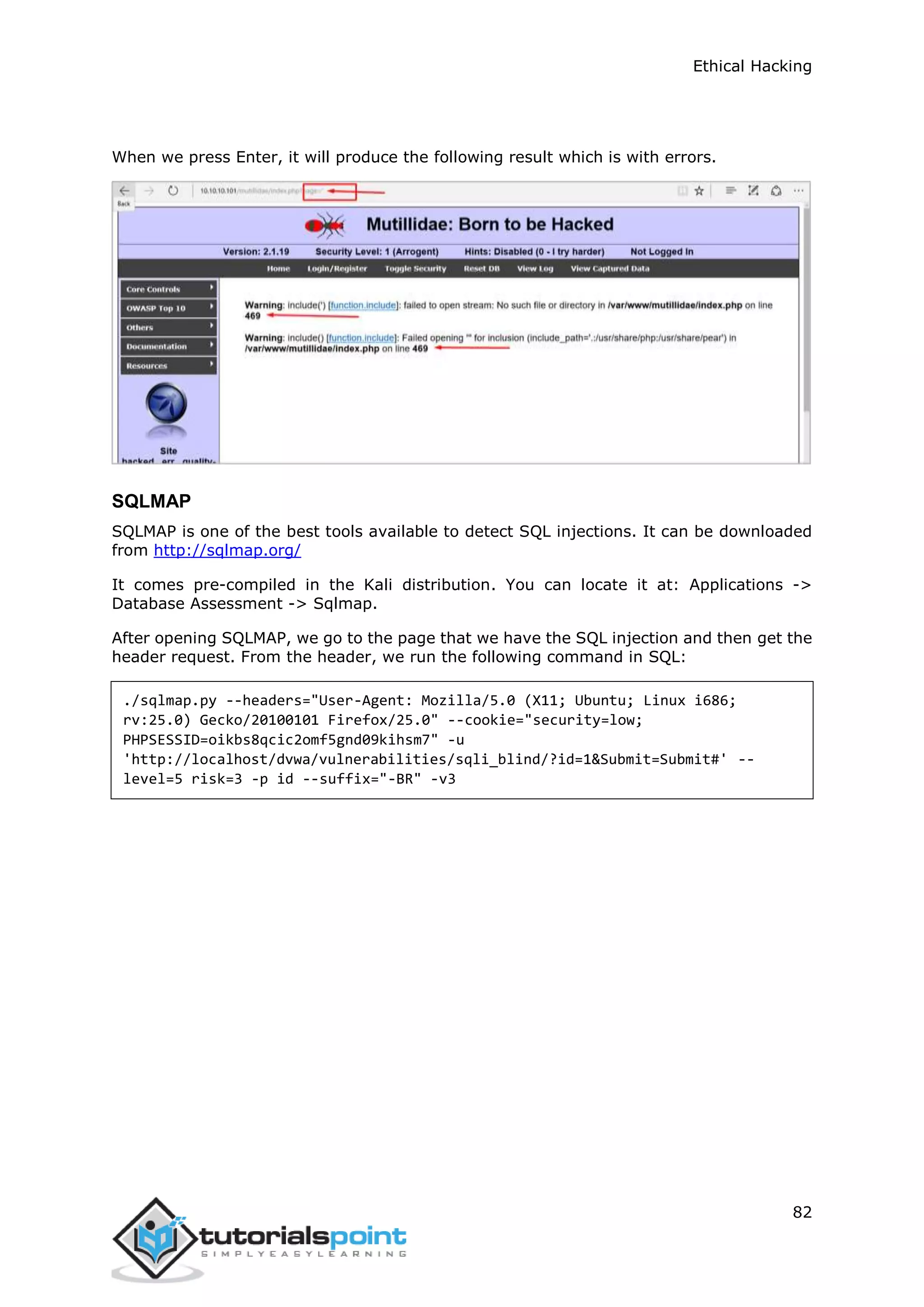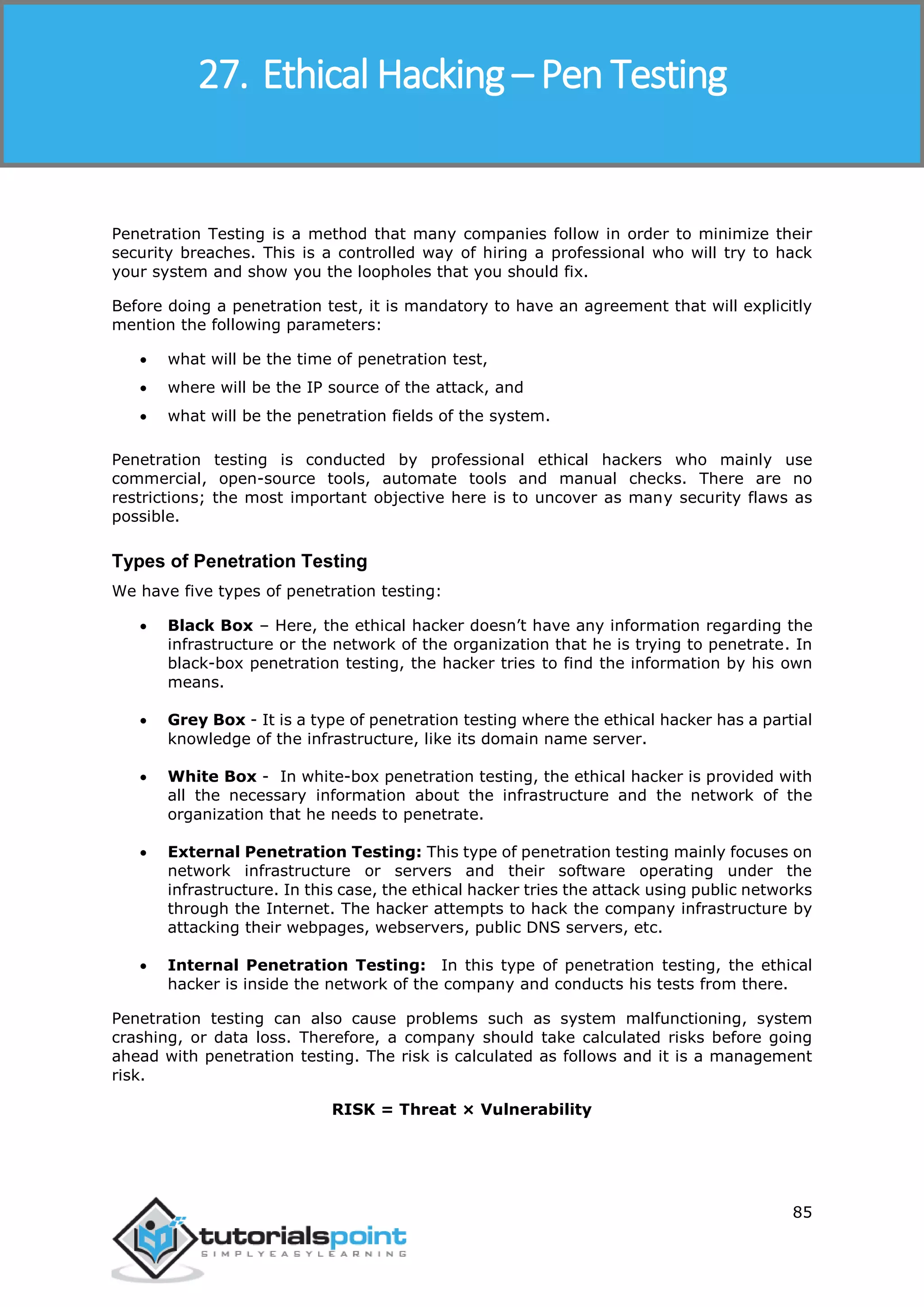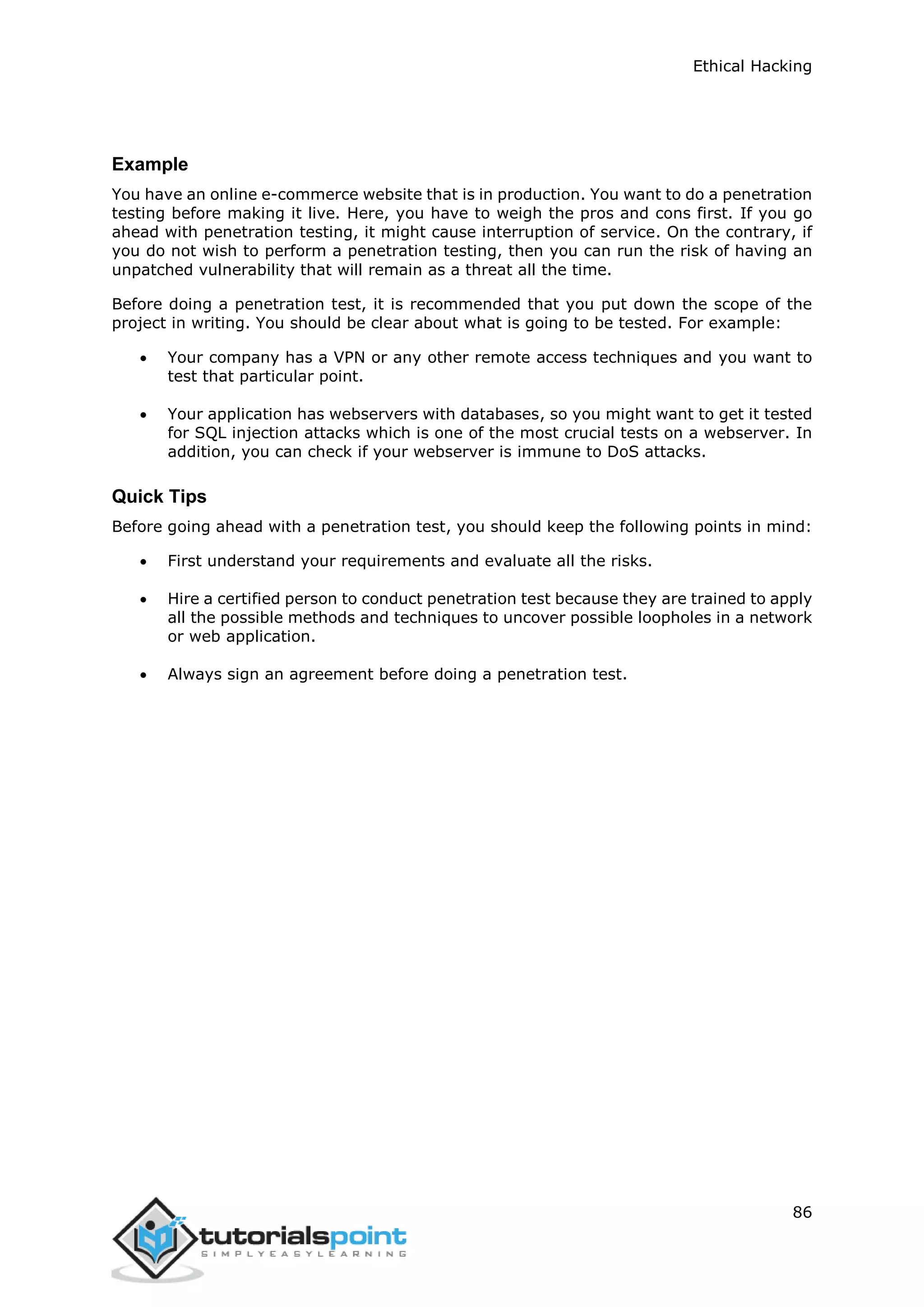This document provides an overview of ethical hacking. It discusses the different types of hackers such as white hat, black hat, and grey hat hackers. It also covers some famous hackers and the tools and skills used in ethical hacking. The document outlines the process of ethical hacking which includes steps like reconnaissance, fingerprinting, sniffing, ARP poisoning, DNS poisoning, and exploitation. It provides examples of techniques like using Metasploit, TCP/IP hijacking, email hijacking, and password hacking. The intended audience are professionals looking to learn about ethical hacking and become ethical hackers.

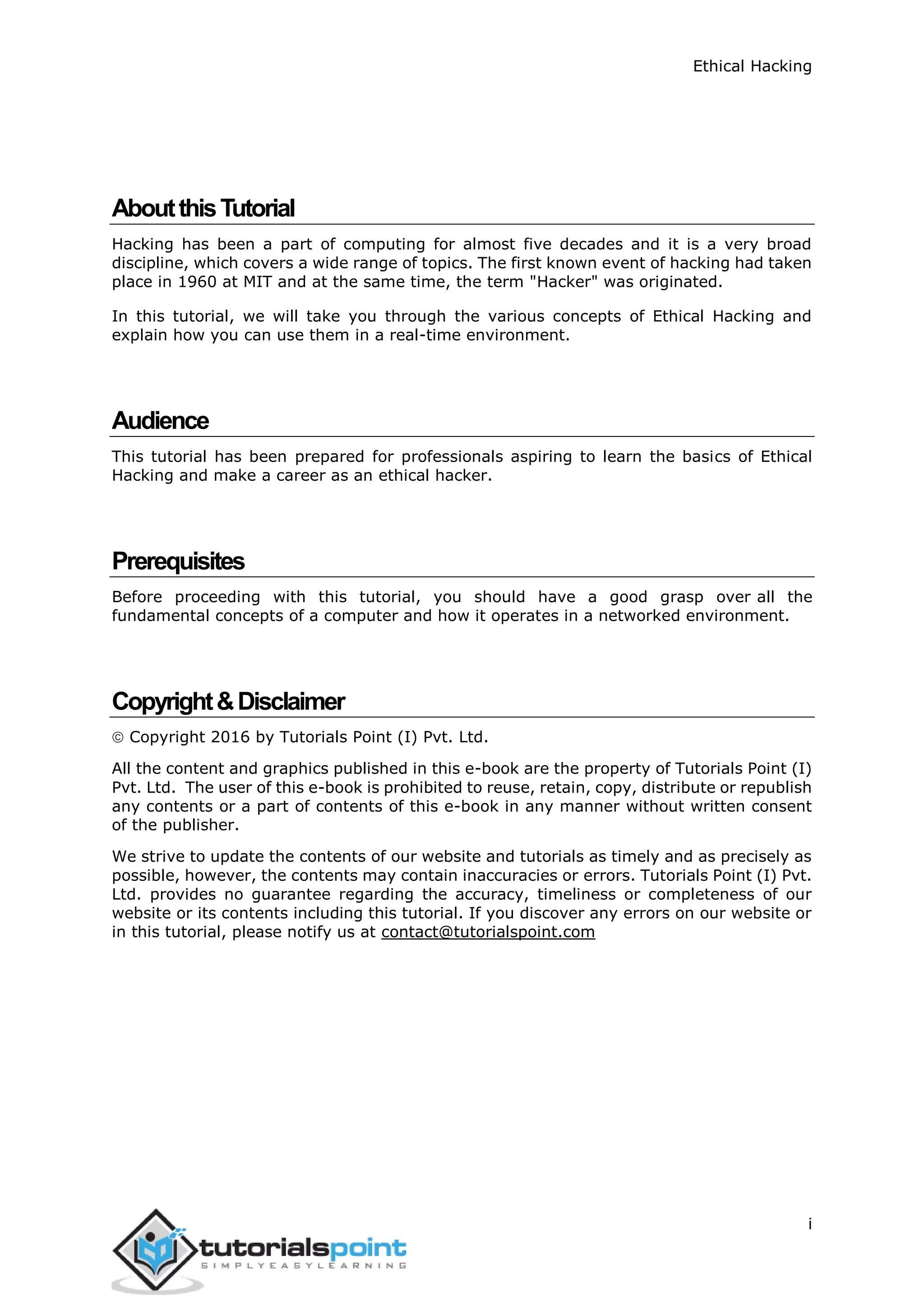



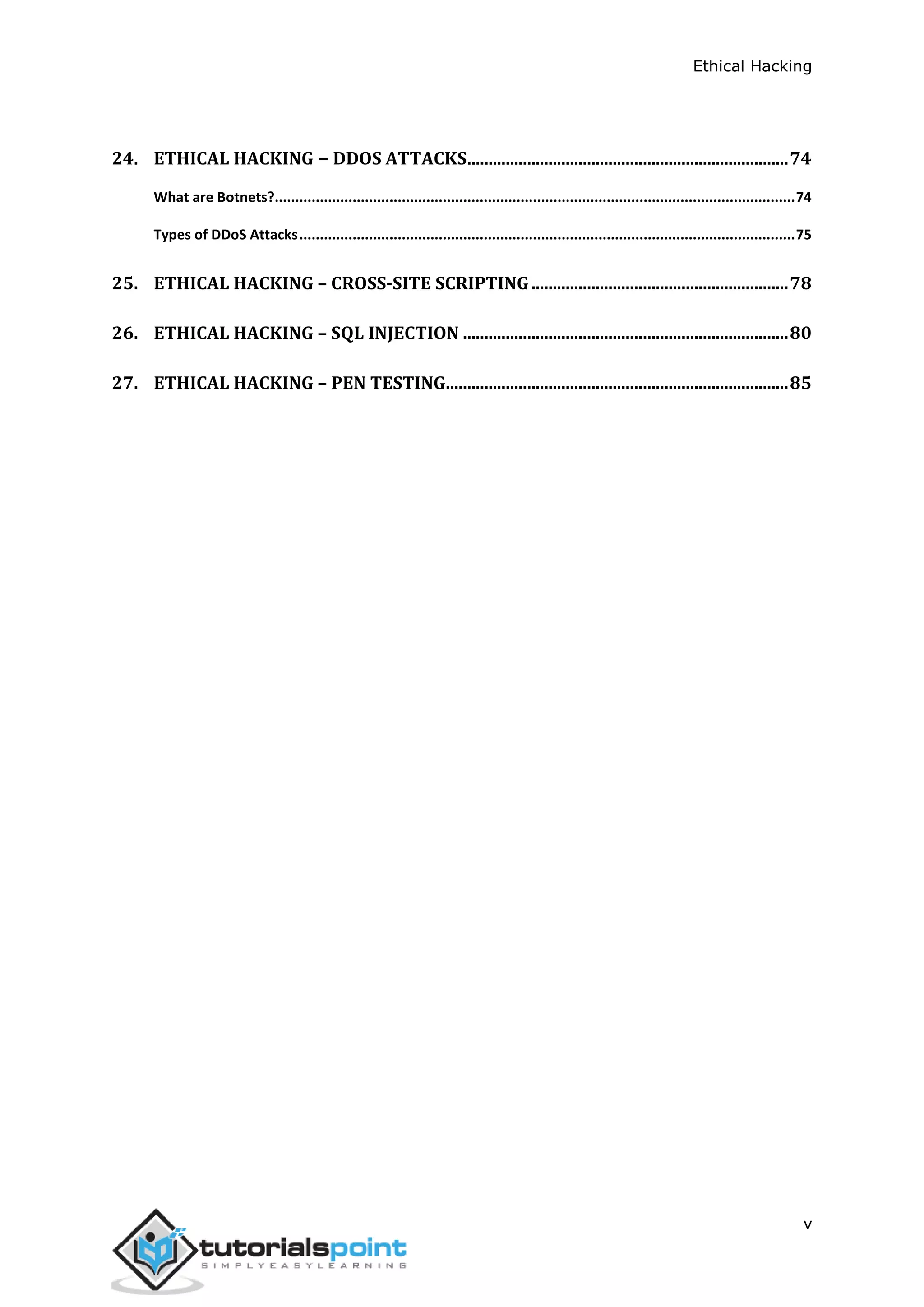

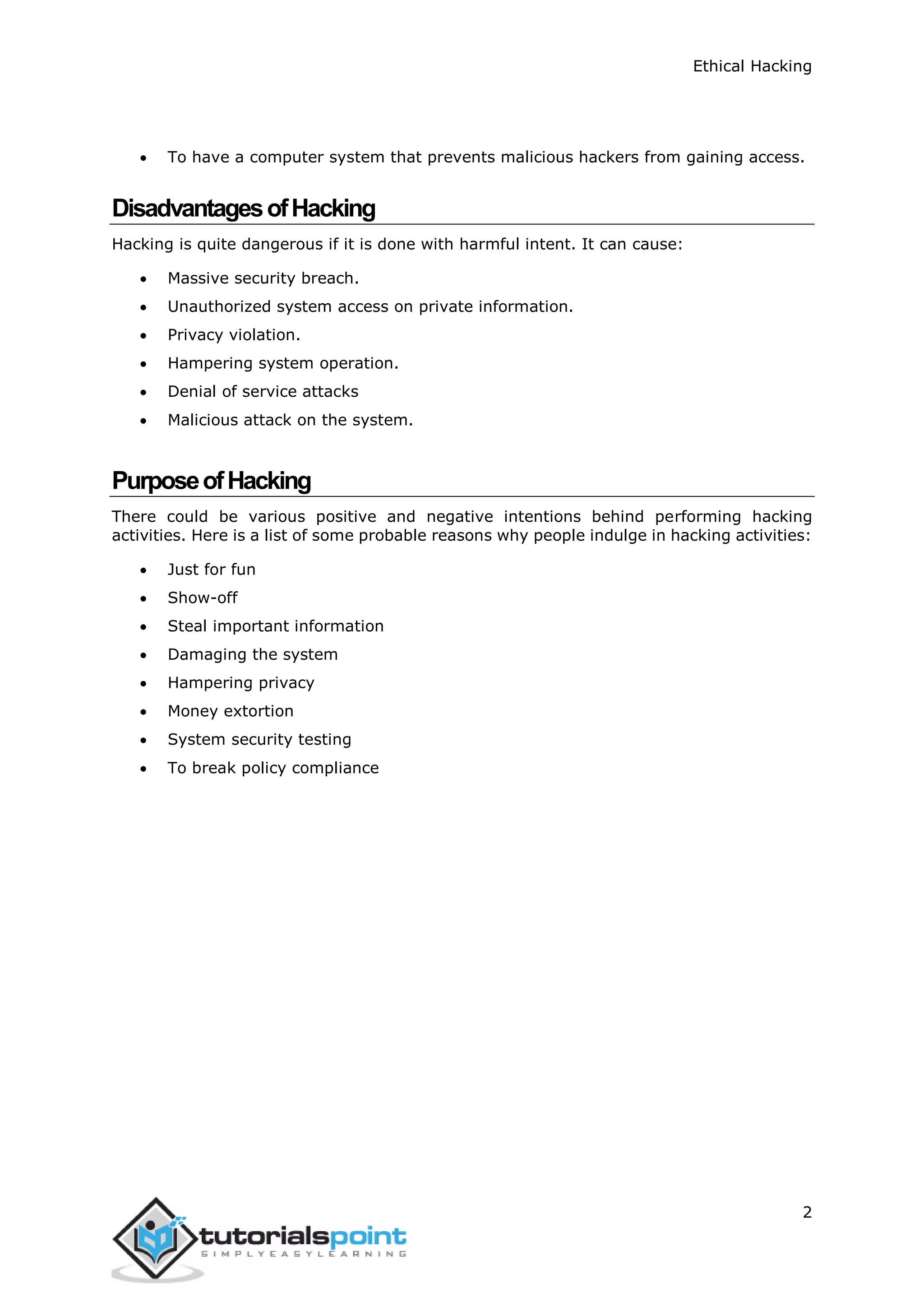
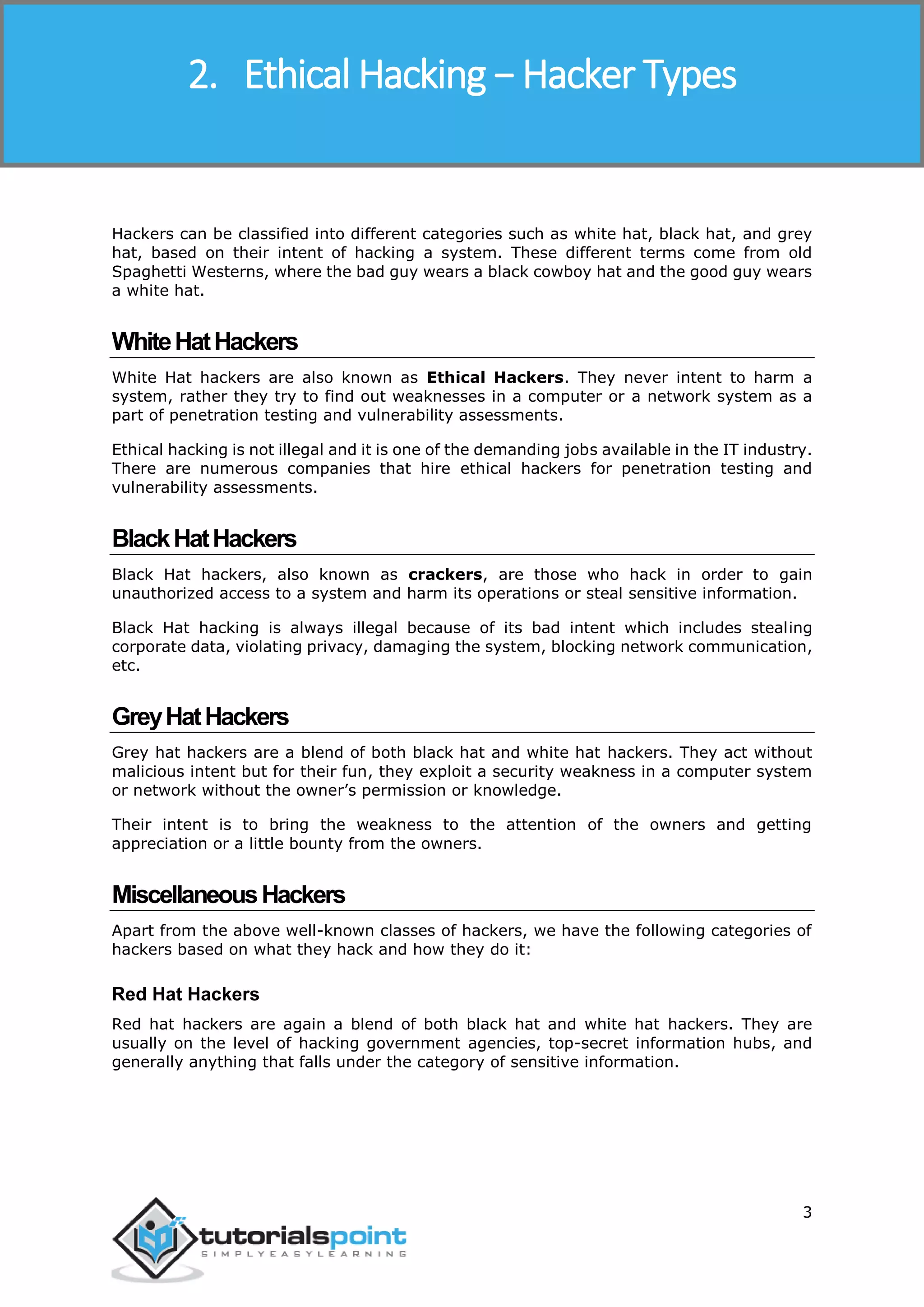
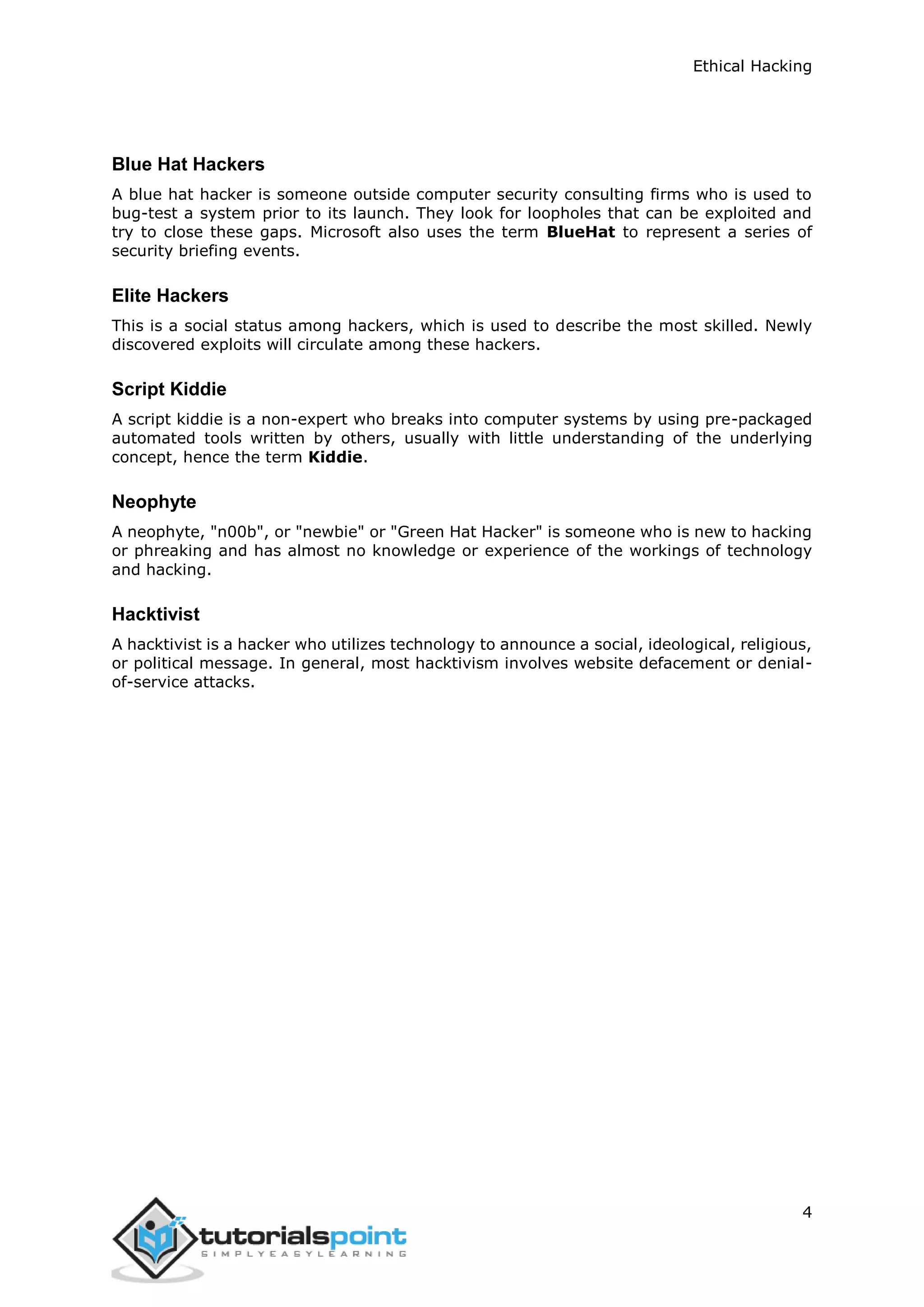






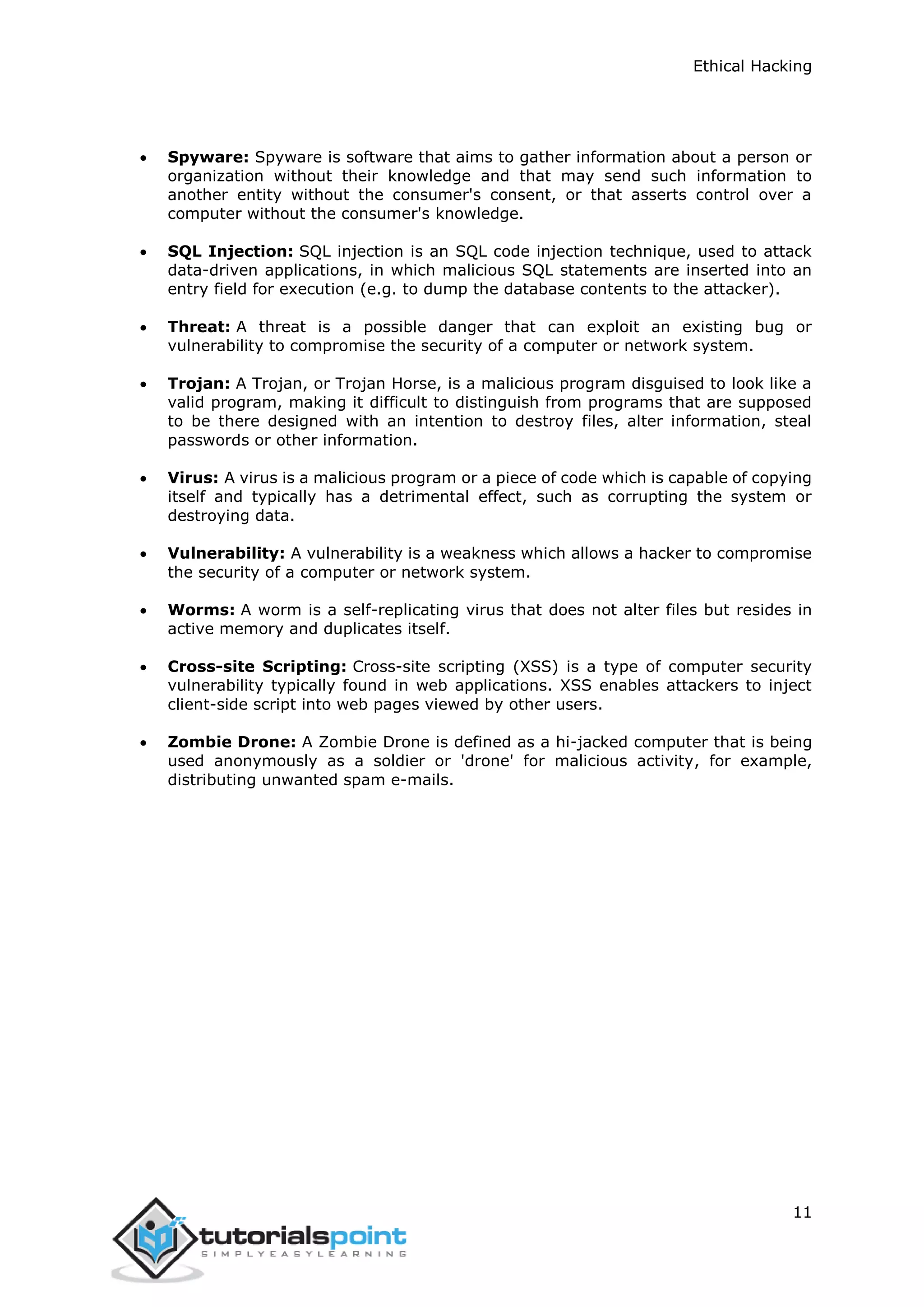
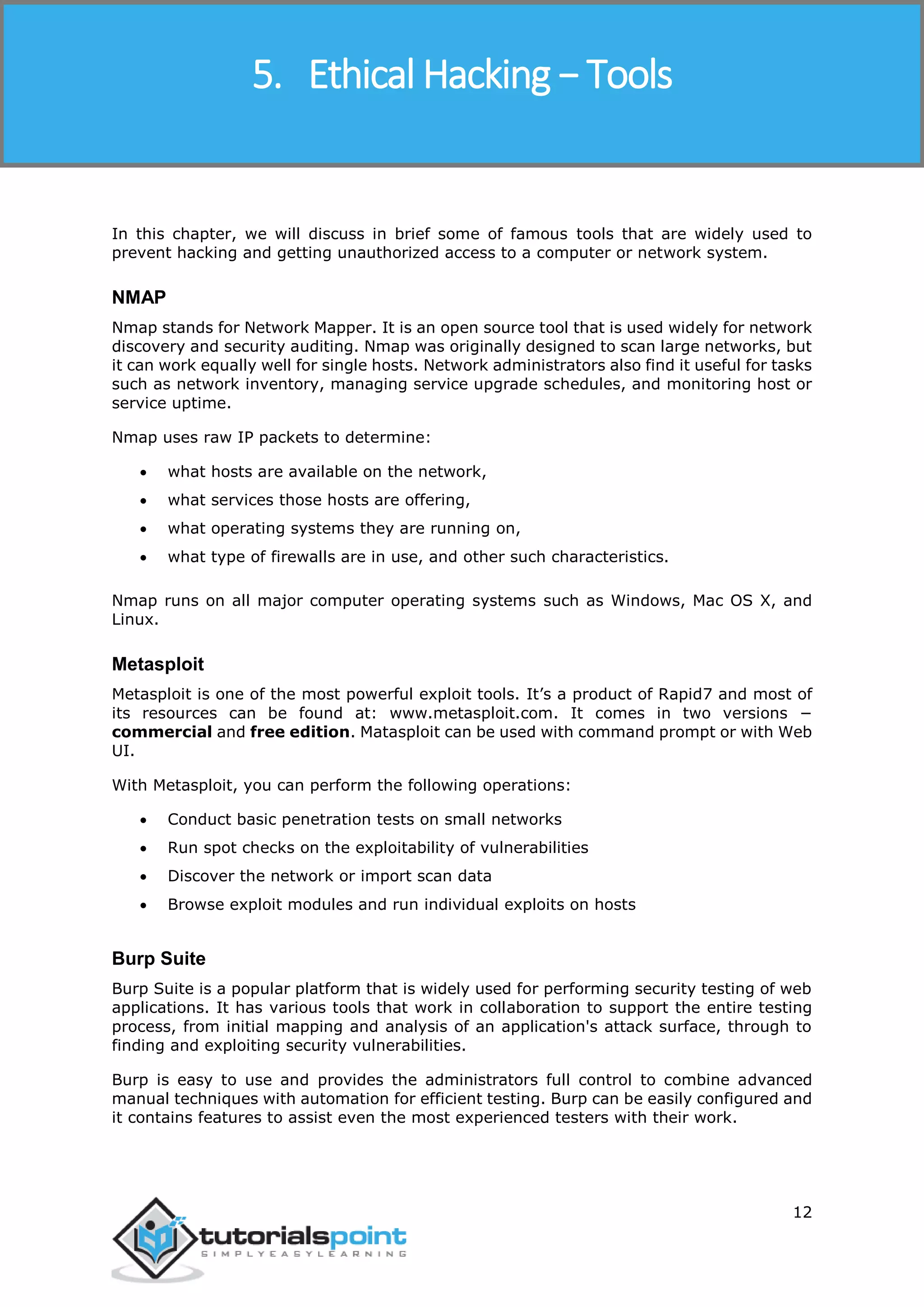
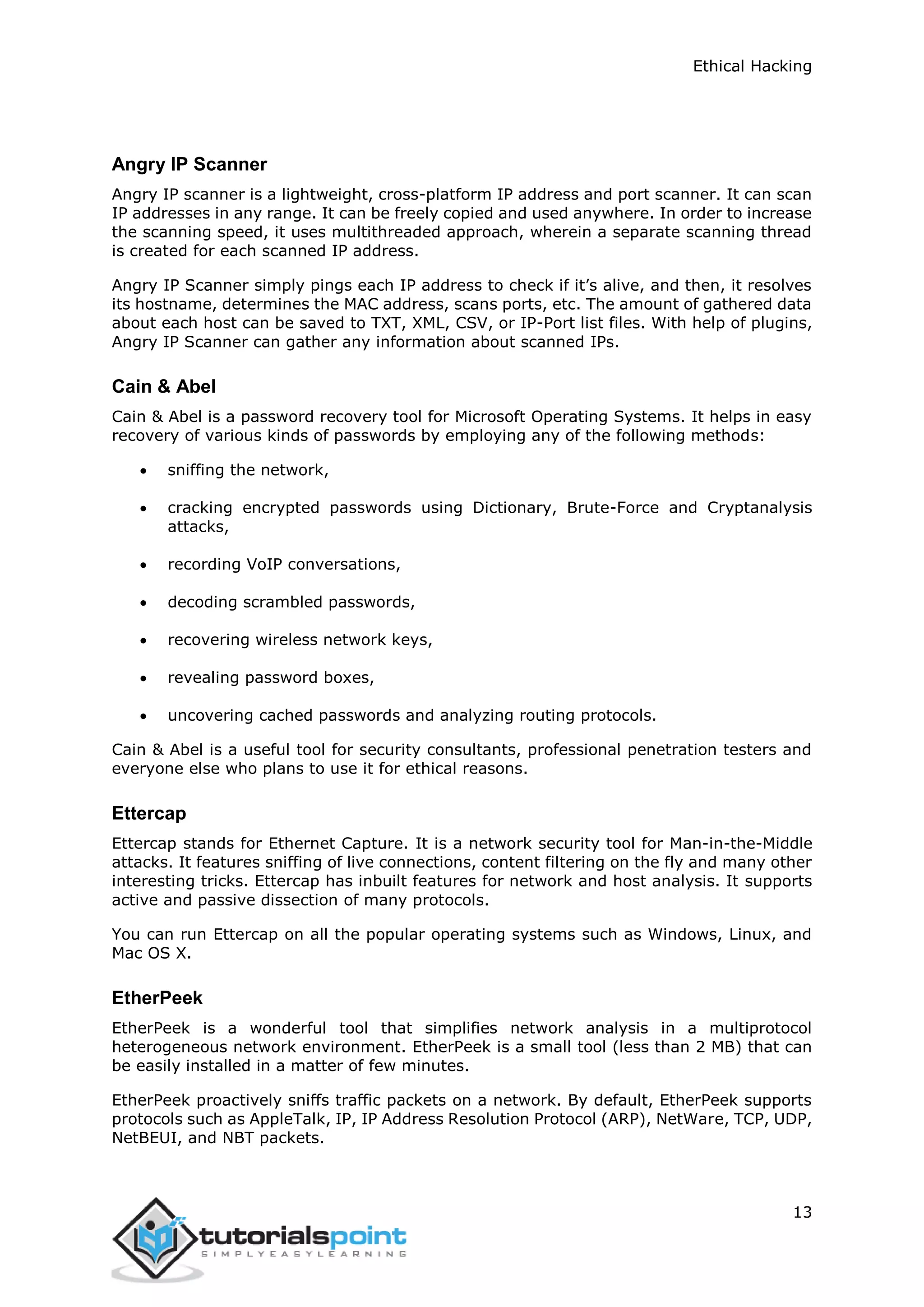
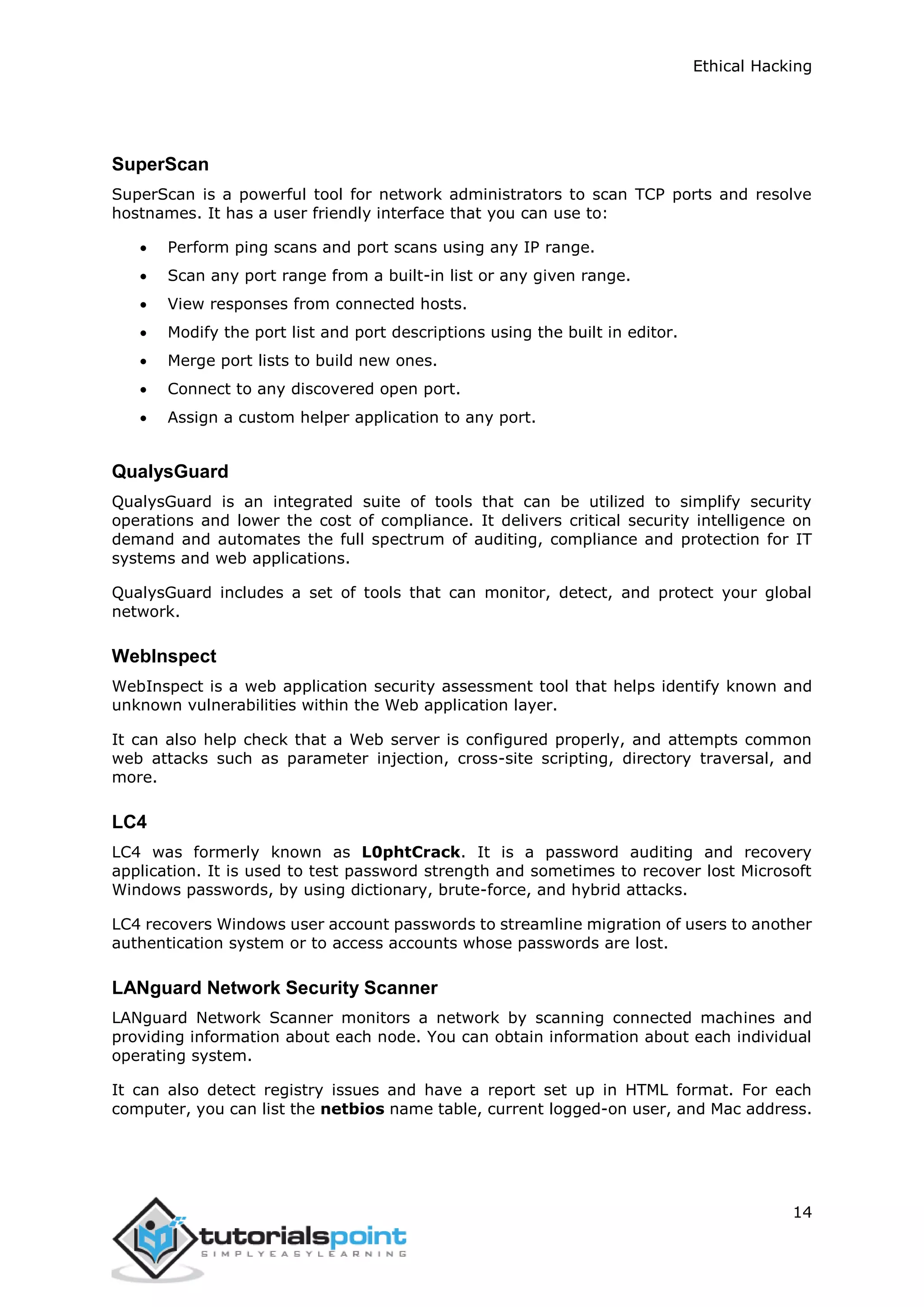
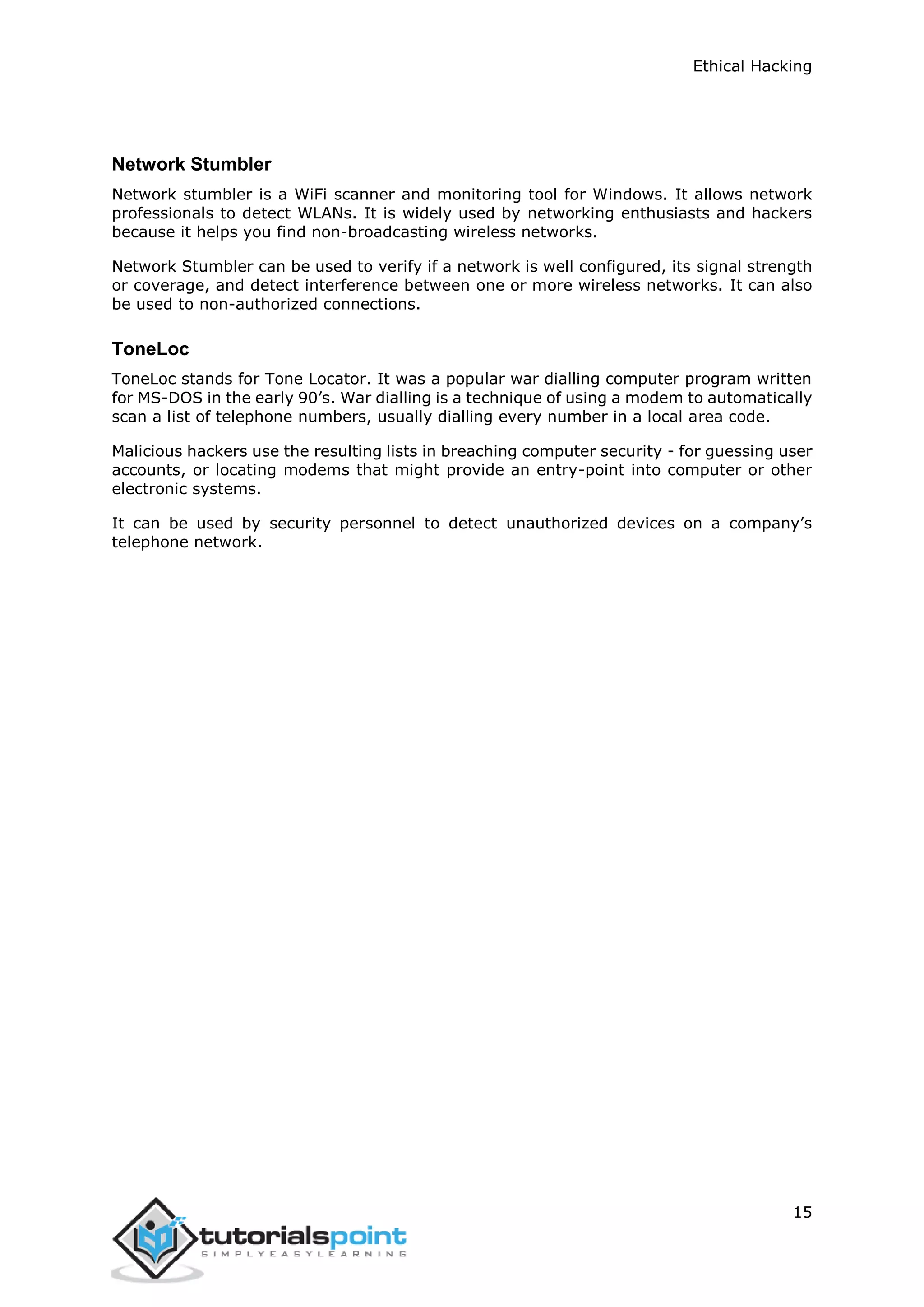
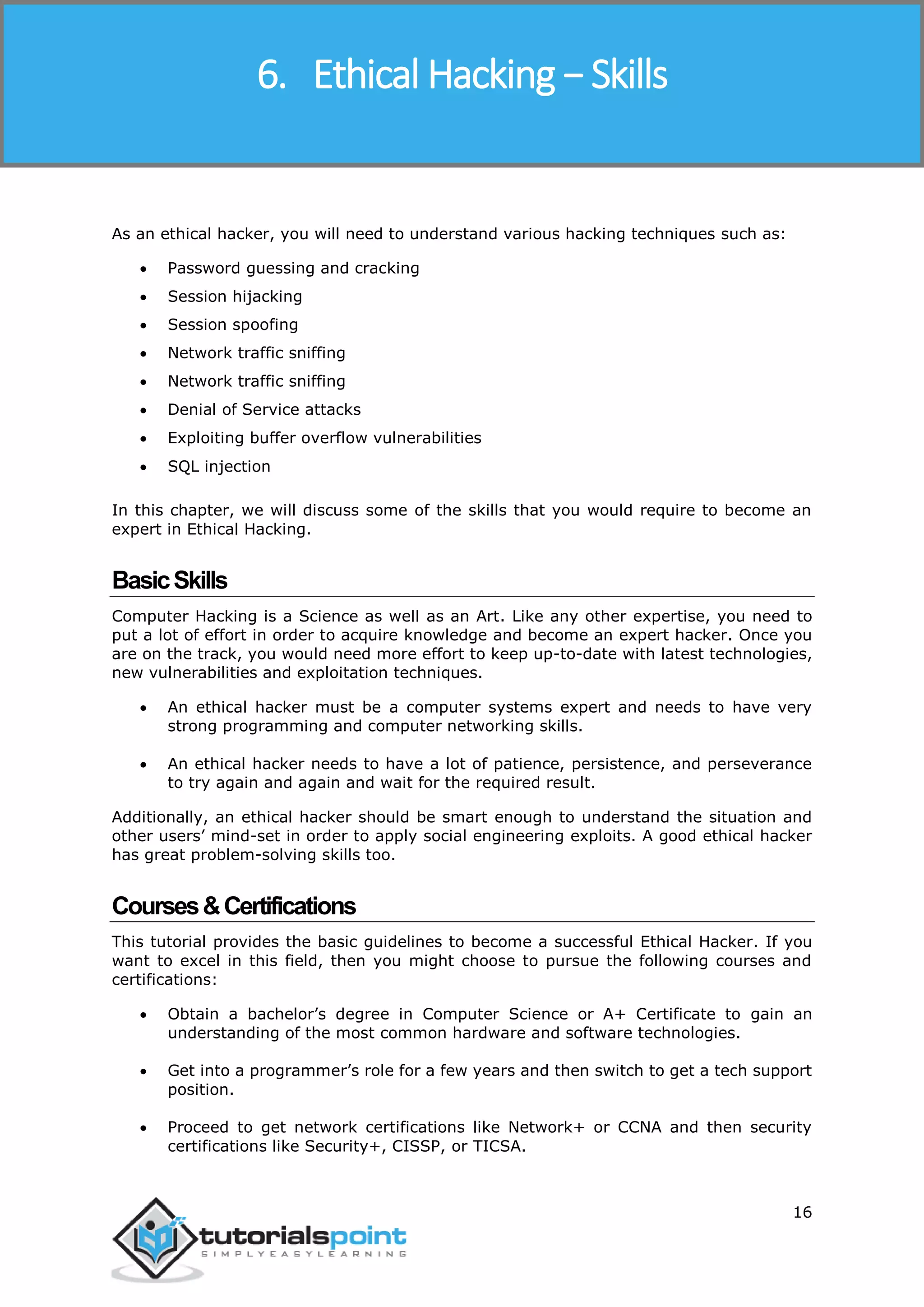
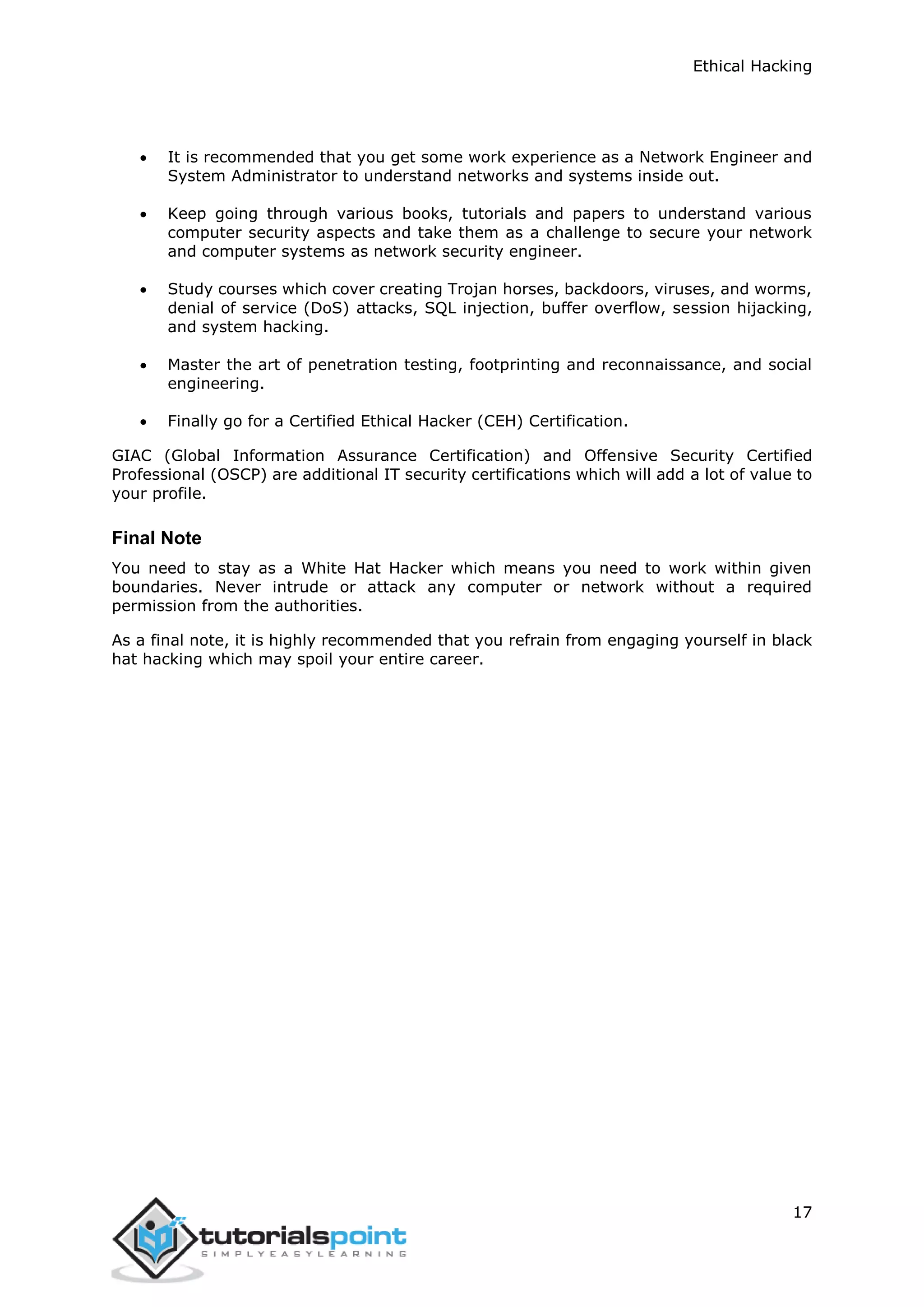
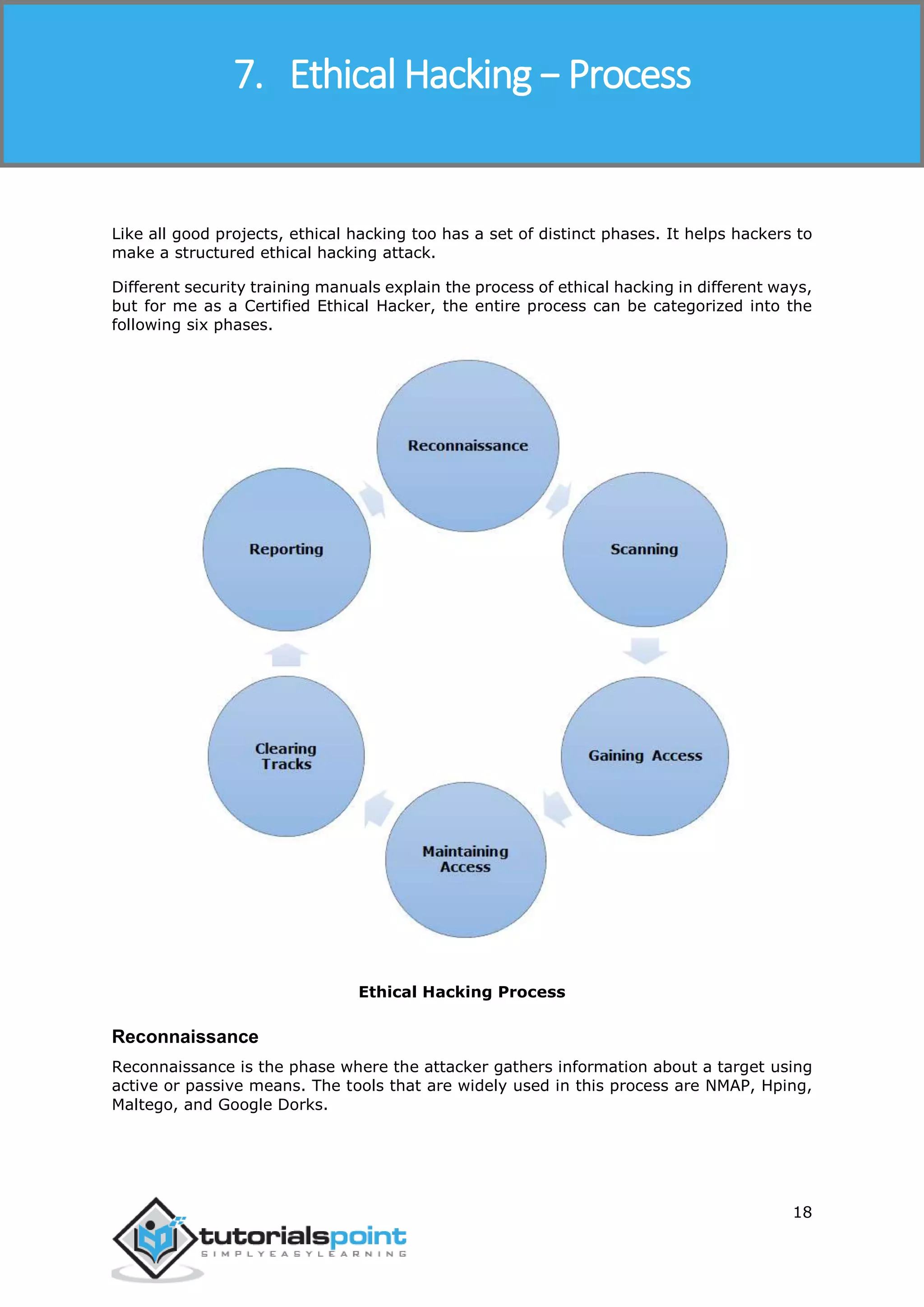

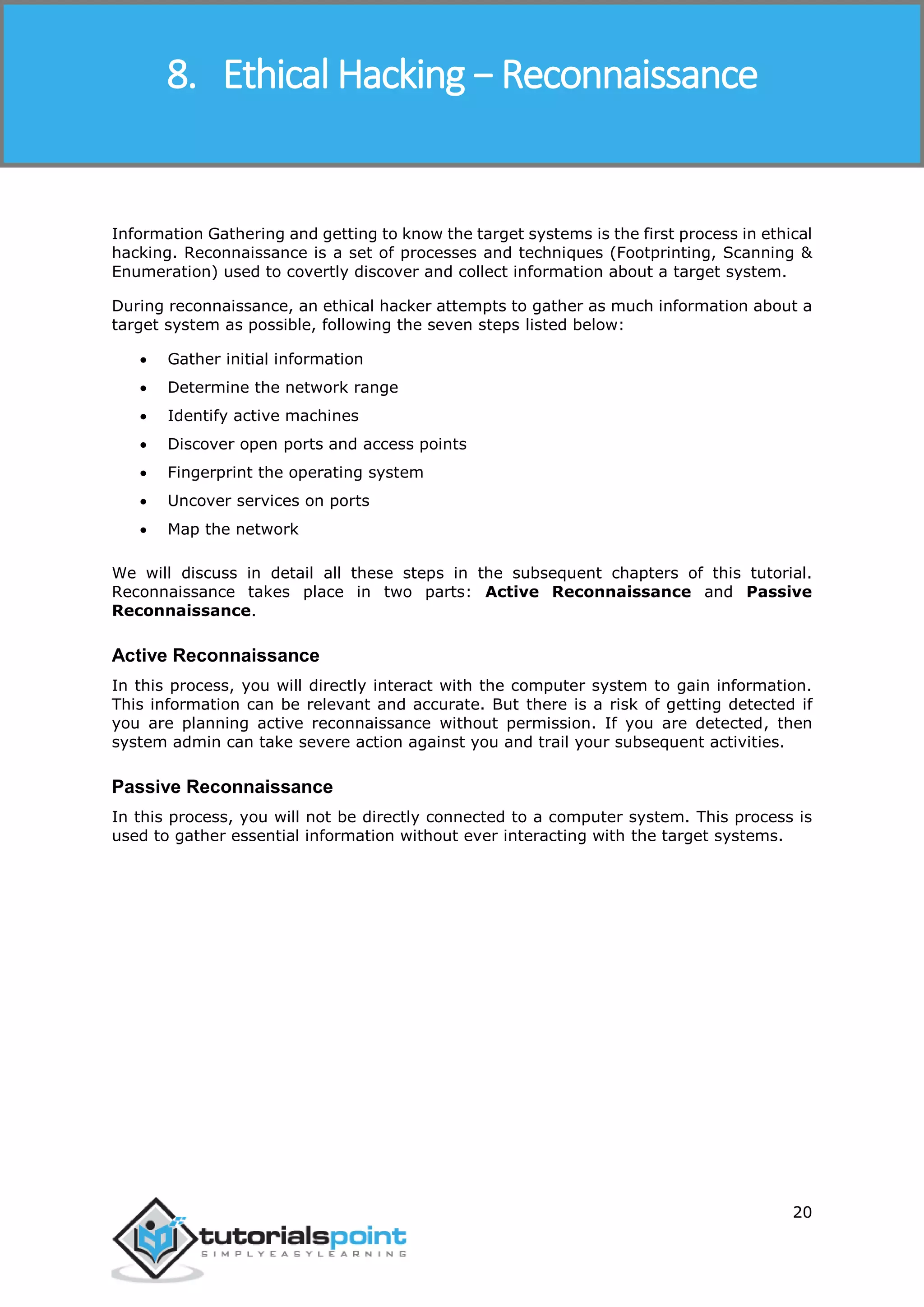
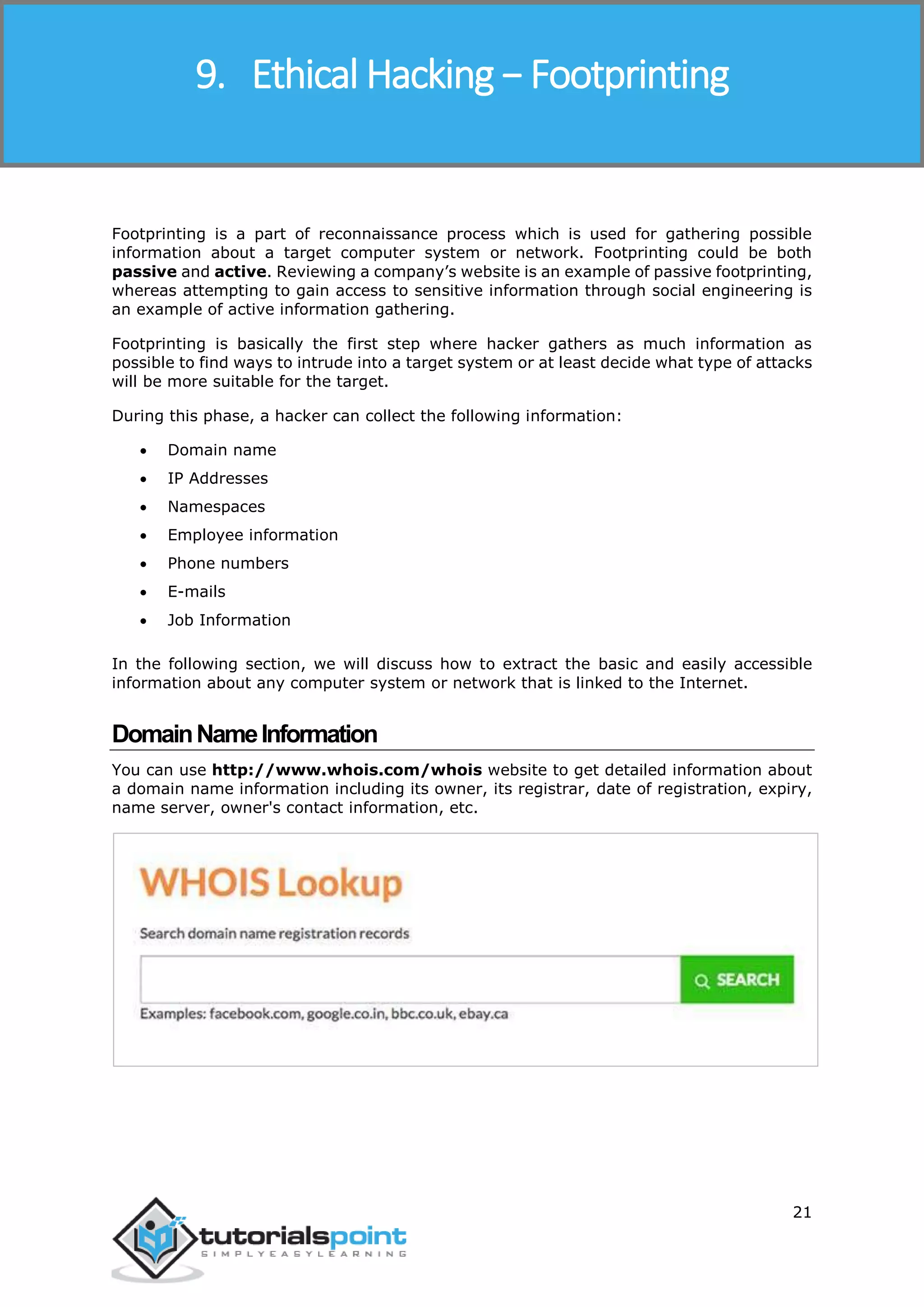
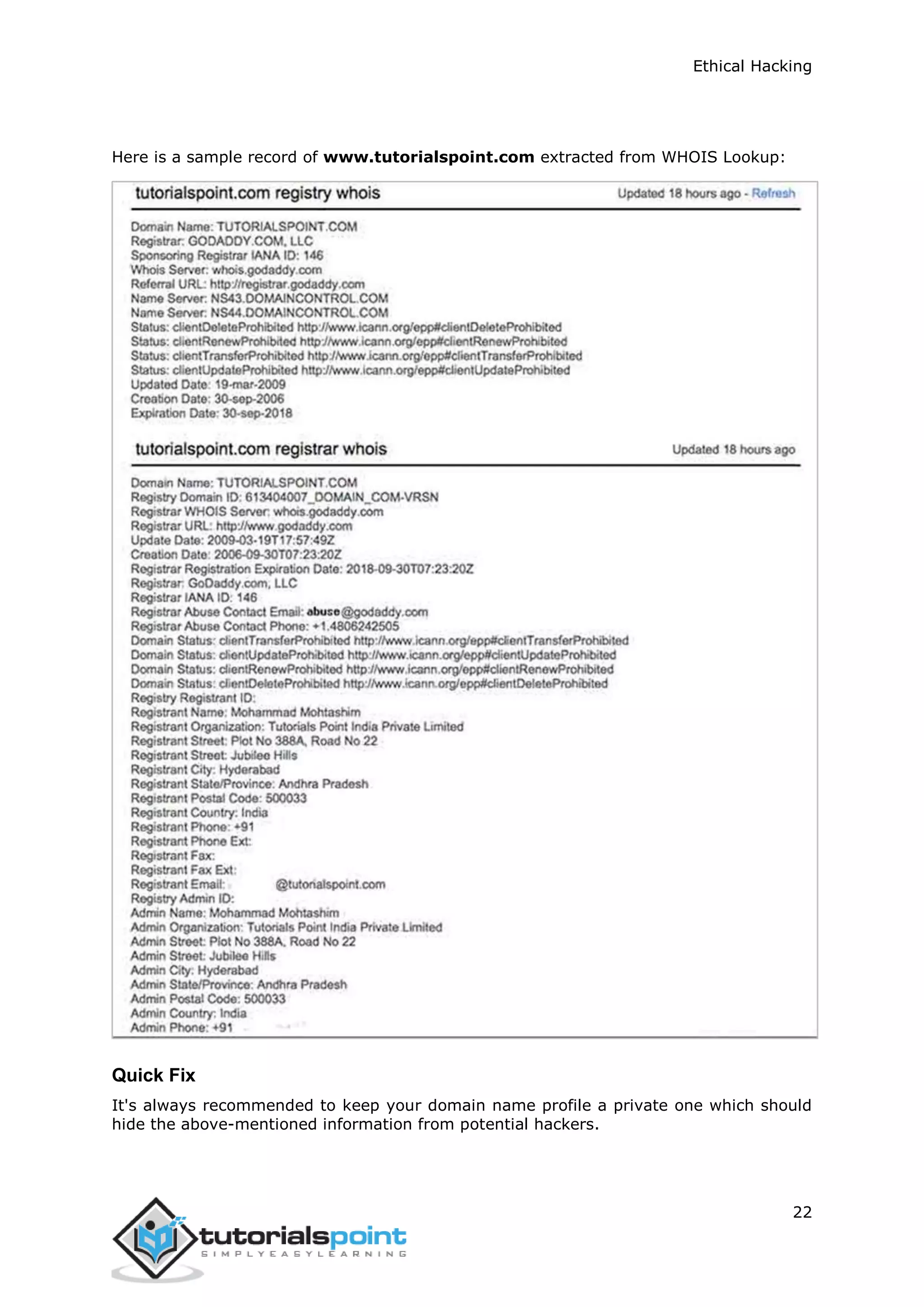

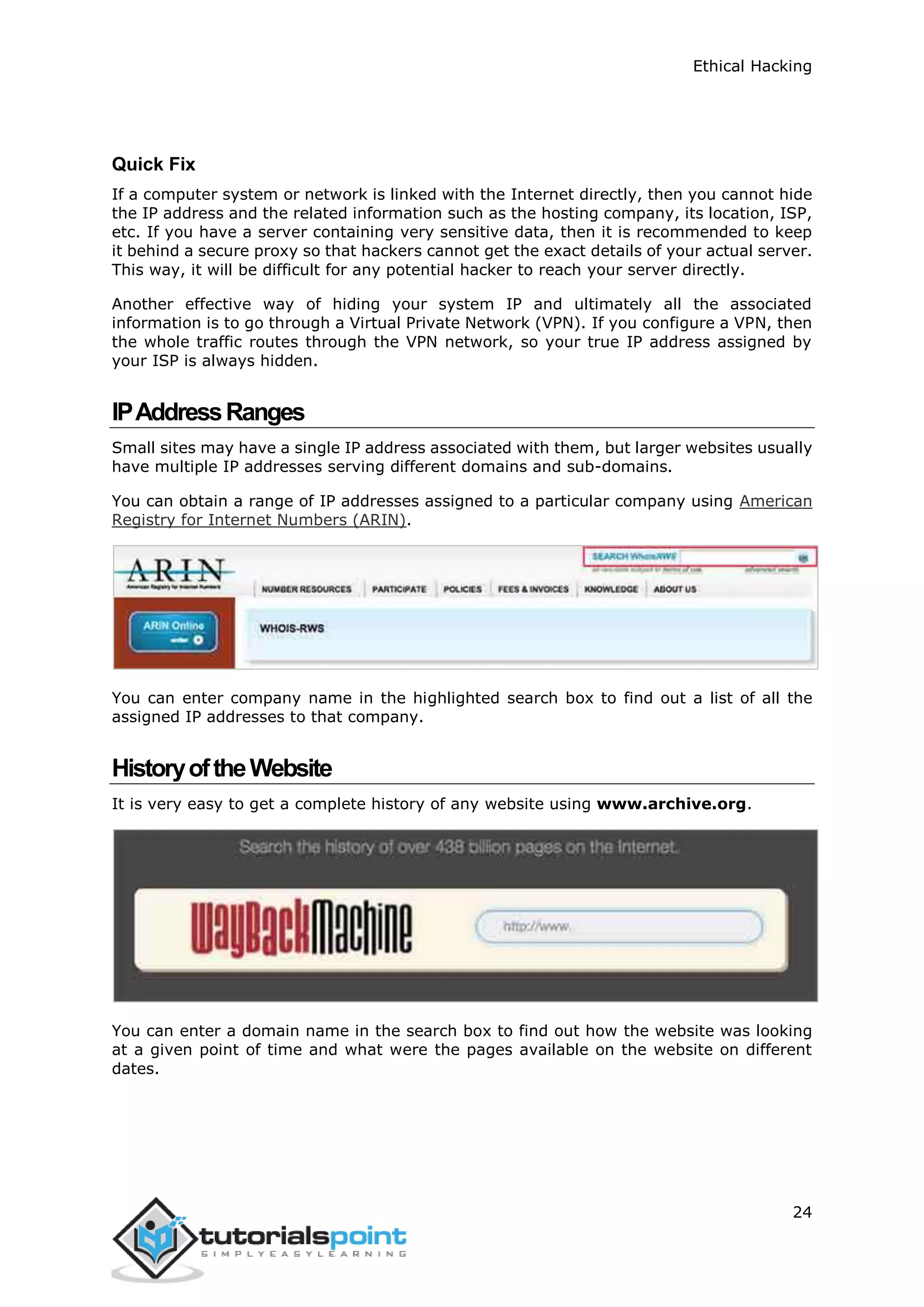
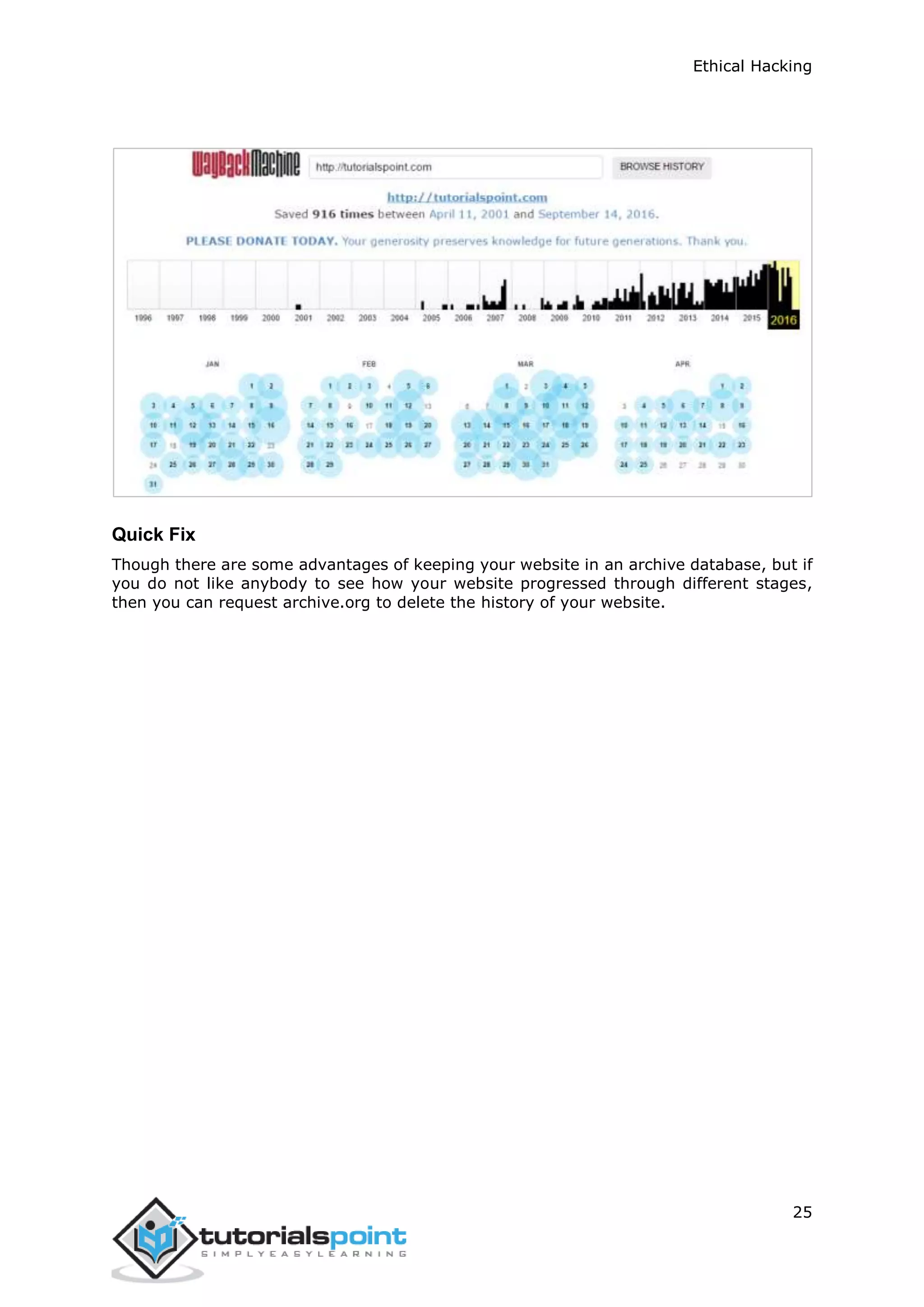
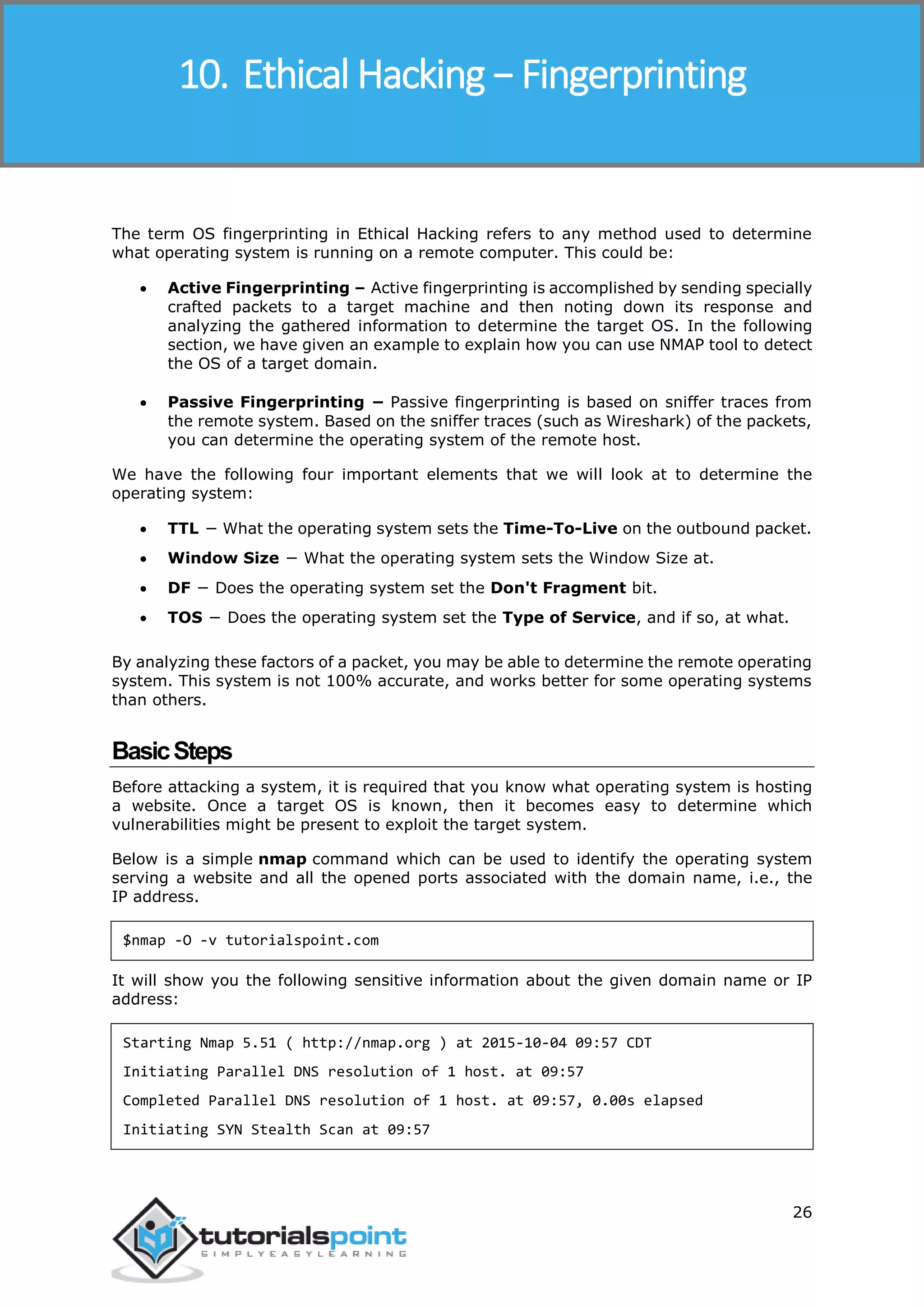
![Ethical Hacking
27
Scanning tutorialspoint.com (66.135.33.172) [1000 ports]
Discovered open port 22/tcp on 66.135.33.172
Discovered open port 3306/tcp on 66.135.33.172
Discovered open port 80/tcp on 66.135.33.172
Discovered open port 443/tcp on 66.135.33.172
Completed SYN Stealth Scan at 09:57, 0.04s elapsed (1000 total ports)
Initiating OS detection (try #1) against tutorialspoint.com (66.135.33.172)
Retrying OS detection (try #2) against tutorialspoint.com (66.135.33.172)
Retrying OS detection (try #3) against tutorialspoint.com (66.135.33.172)
Retrying OS detection (try #4) against tutorialspoint.com (66.135.33.172)
Retrying OS detection (try #5) against tutorialspoint.com (66.135.33.172)
Nmap scan report for tutorialspoint.com (66.135.33.172)
Host is up (0.000038s latency).
Not shown: 996 closed ports
PORT STATE SERVICE
22/tcp open ssh
80/tcp open http
443/tcp open https
3306/tcp open mysql
TCP/IP fingerprint:
OS:SCAN(V=5.51%D=10/4%OT=22%CT=1%CU=40379%PV=N%DS=0%DC=L%G=Y%TM=56113E6D%P=
OS:x86_64-redhat-linux-gnu)SEQ(SP=106%GCD=1%ISR=109%TI=Z%CI=Z%II=I%TS=A)OPS
OS:(O1=MFFD7ST11NW7%O2=MFFD7ST11NW7%O3=MFFD7NNT11NW7%O4=MFFD7ST11NW7%O5=MFF
OS:D7ST11NW7%O6=MFFD7ST11)WIN(W1=FFCB%W2=FFCB%W3=FFCB%W4=FFCB%W5=FFCB%W6=FF
OS:CB)ECN(R=Y%DF=Y%T=40%W=FFD7%O=MFFD7NNSNW7%CC=Y%Q=)T1(R=Y%DF=Y%T=40%S=O%A
OS:=S+%F=AS%RD=0%Q=)T2(R=N)T3(R=N)T4(R=Y%DF=Y%T=40%W=0%S=A%A=Z%F=R%O=%RD=0%
OS:Q=)T5(R=Y%DF=Y%T=40%W=0%S=Z%A=S+%F=AR%O=%RD=0%Q=)T6(R=Y%DF=Y%T=40%W=0%S=
OS:A%A=Z%F=R%O=%RD=0%Q=)T7(R=Y%DF=Y%T=40%W=0%S=Z%A=S+%F=AR%O=%RD=0%Q=)U1(R=
OS:Y%DF=N%T=40%IPL=164%UN=0%RIPL=G%RID=G%RIPCK=G%RUCK=G%RUD=G)IE(R=Y%DFI=N%
OS:T=40%CD=S)
If you do not have nmap command installed on your Linux system, then you can install it
using the following yum command:
$yum install nmap](https://image.slidesharecdn.com/afullethicalhackingcourse-211114035008/75/A-full-ethical-hacking-course-33-2048.jpg)
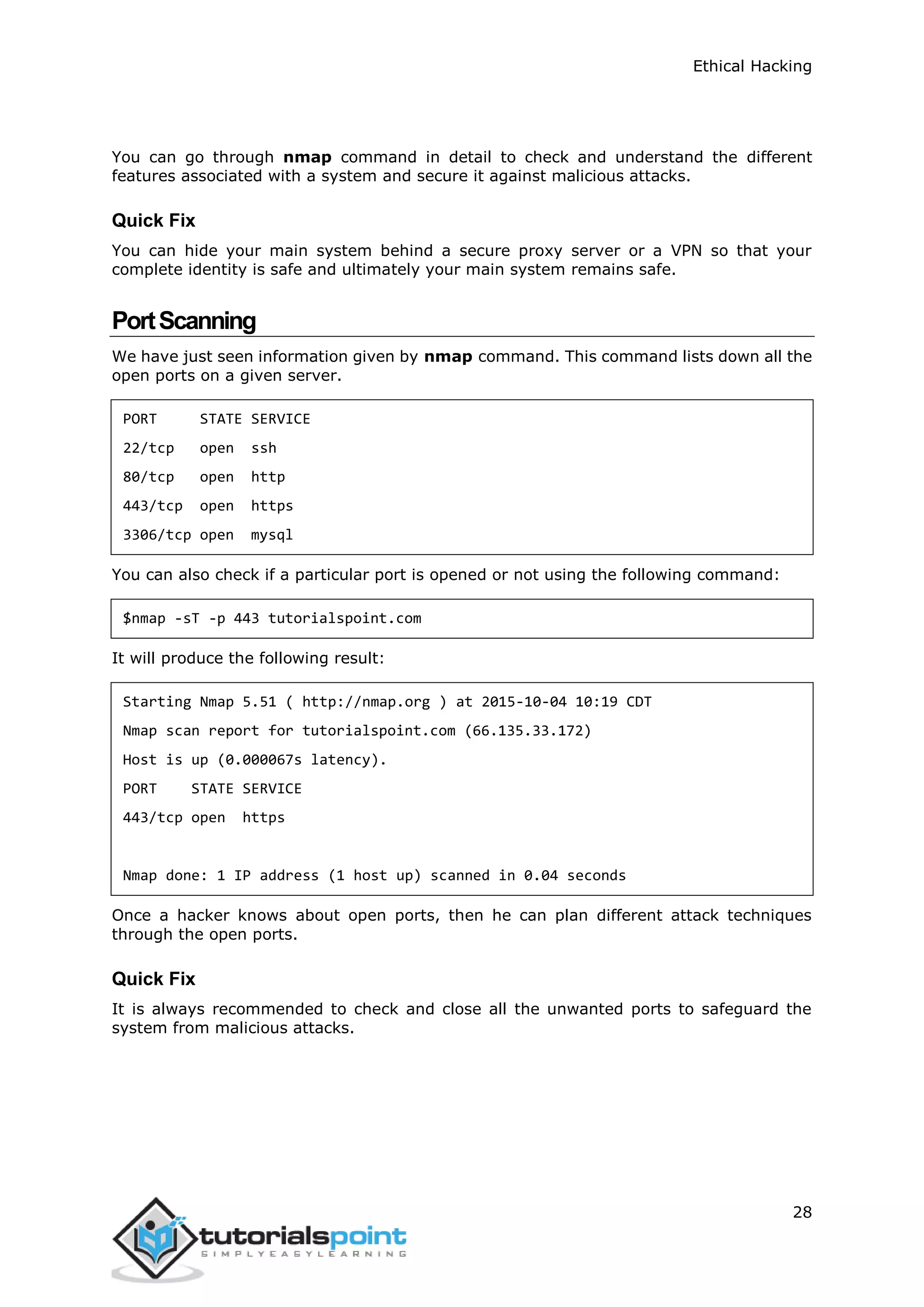
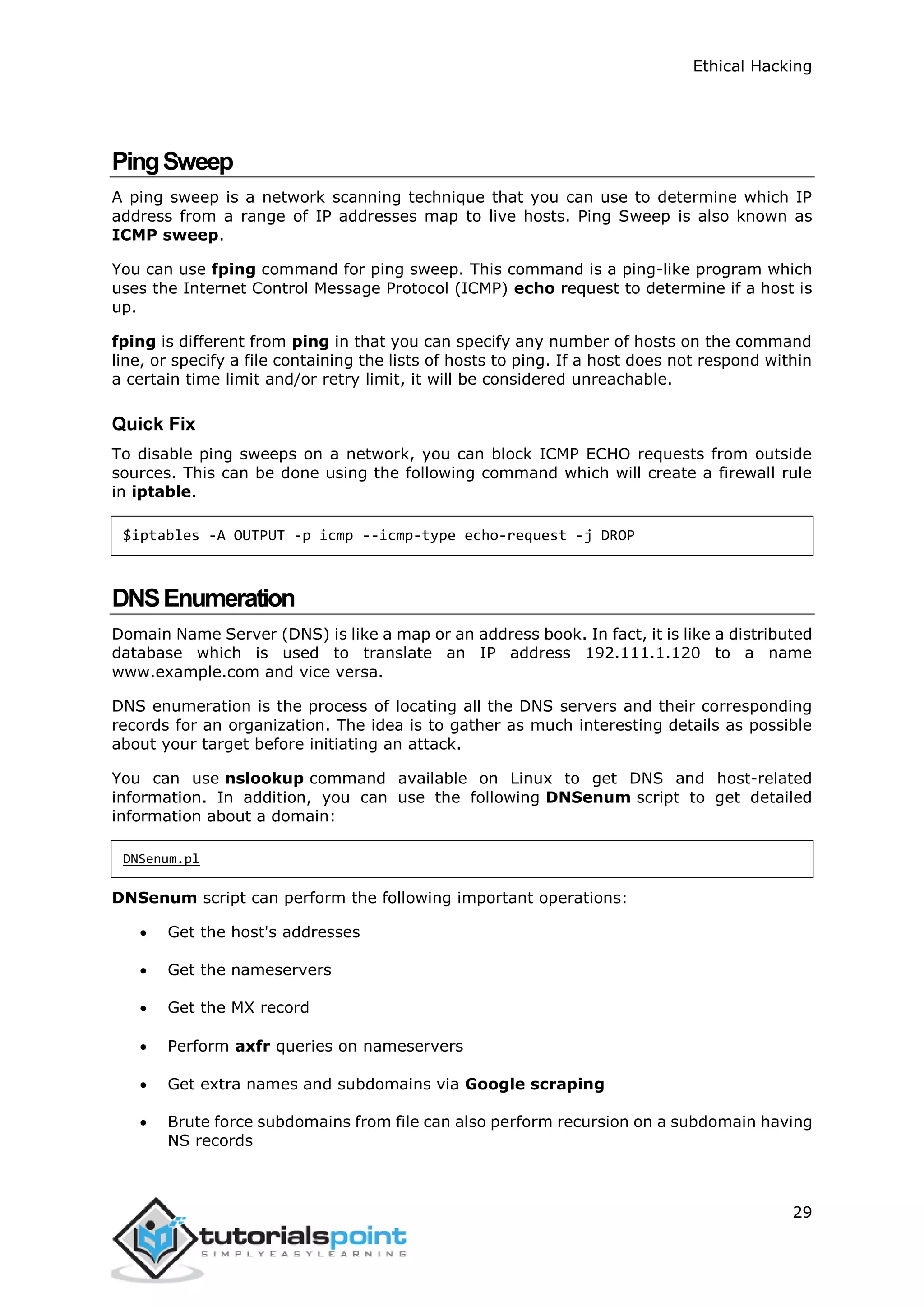
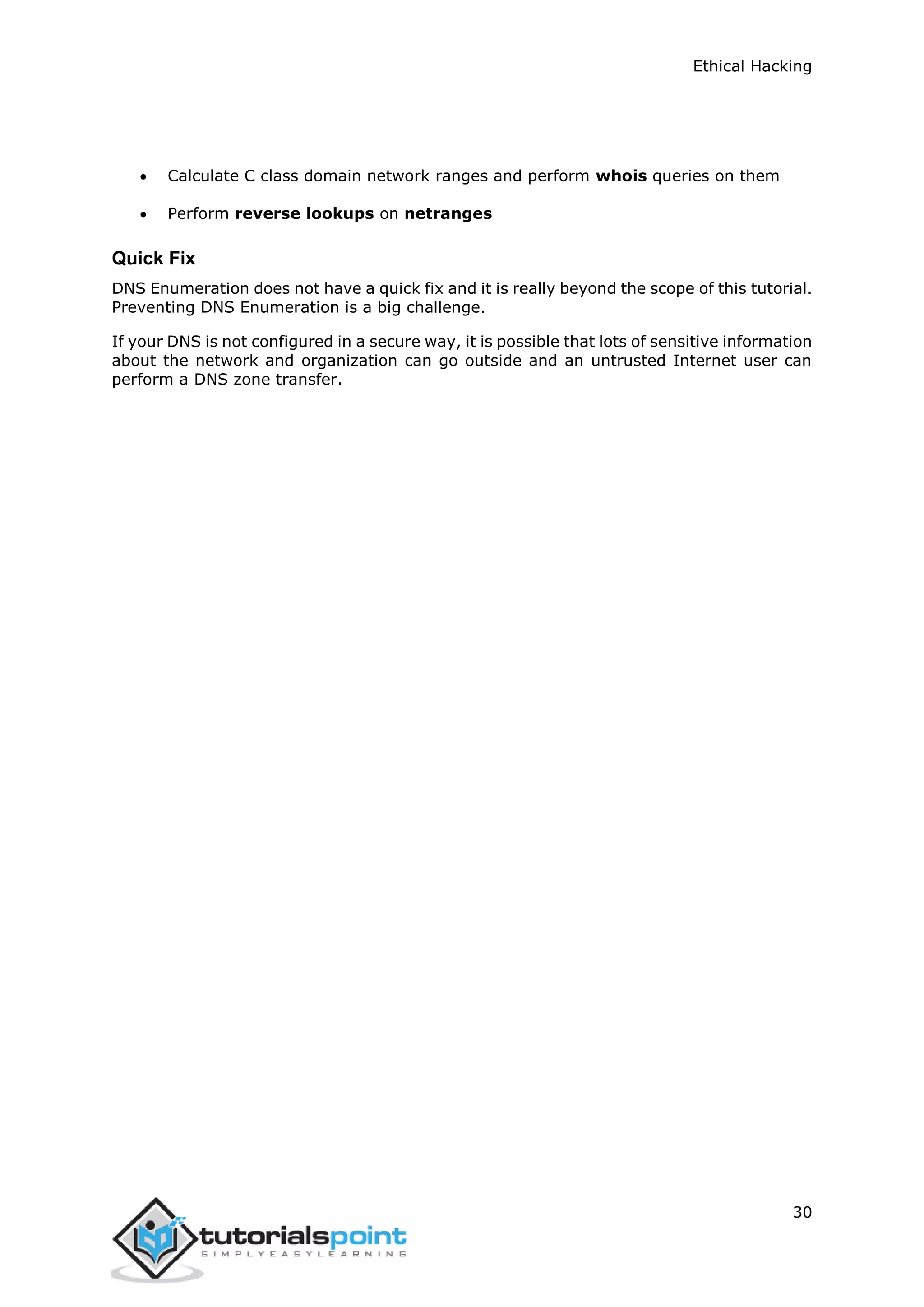
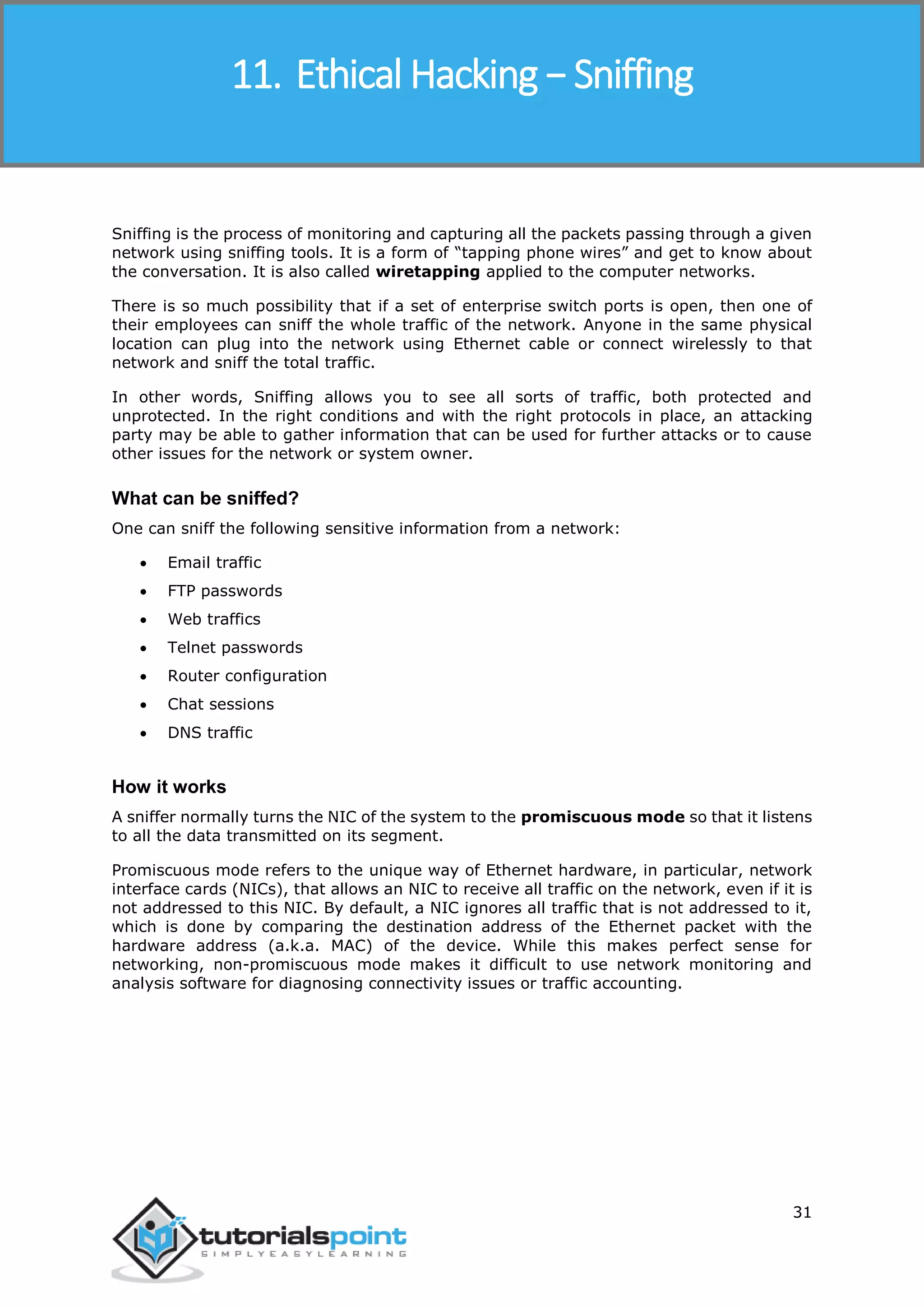
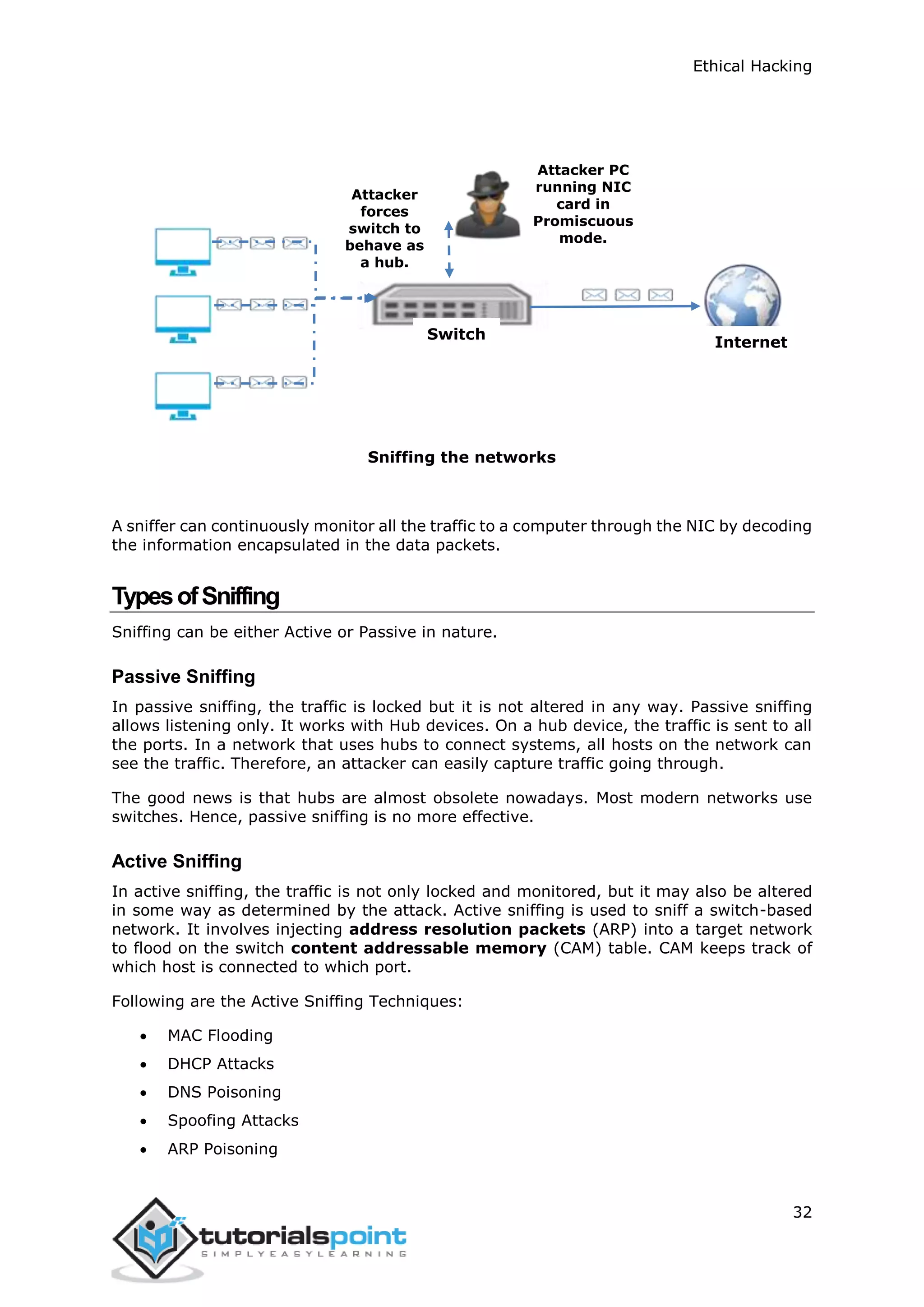


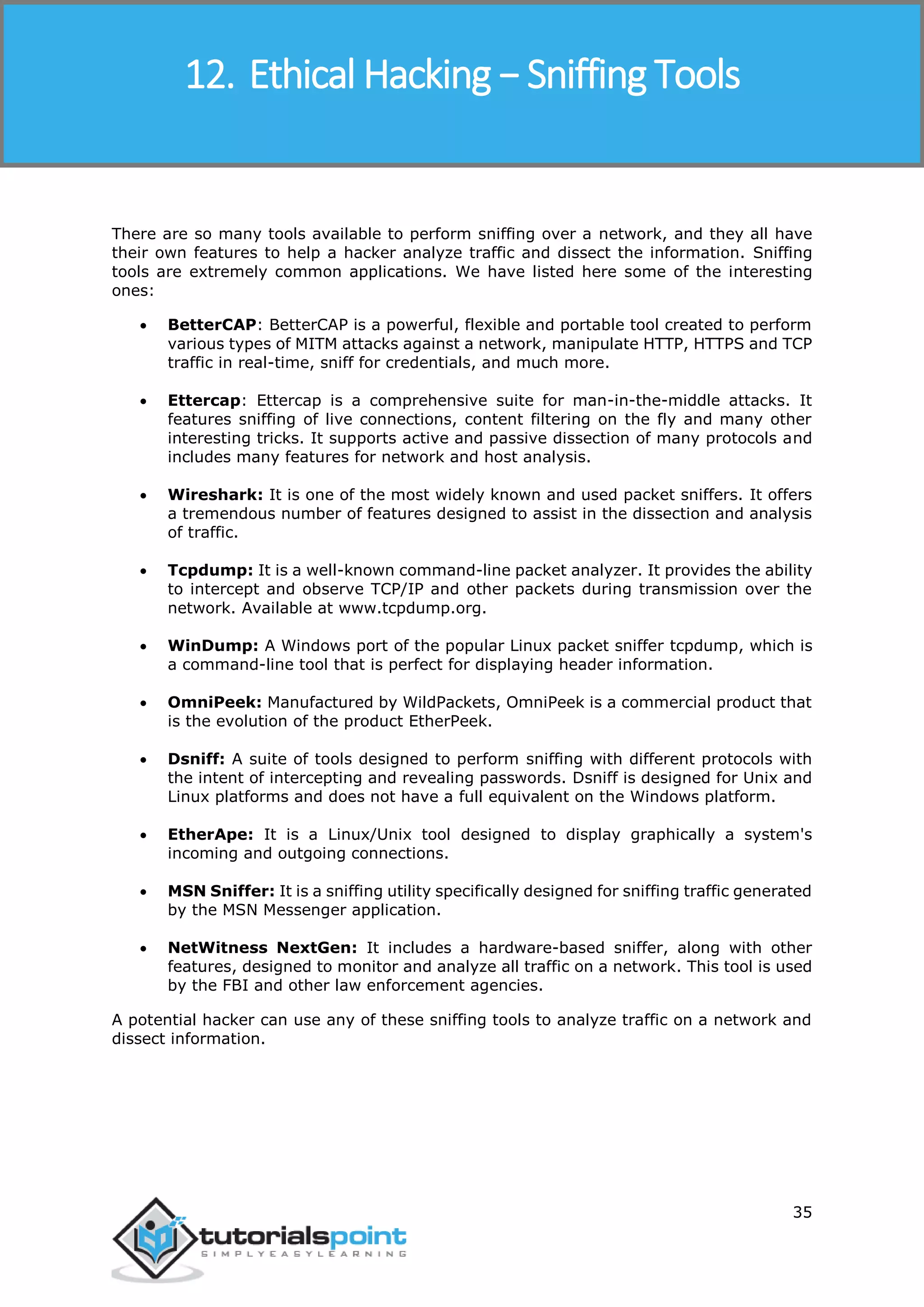
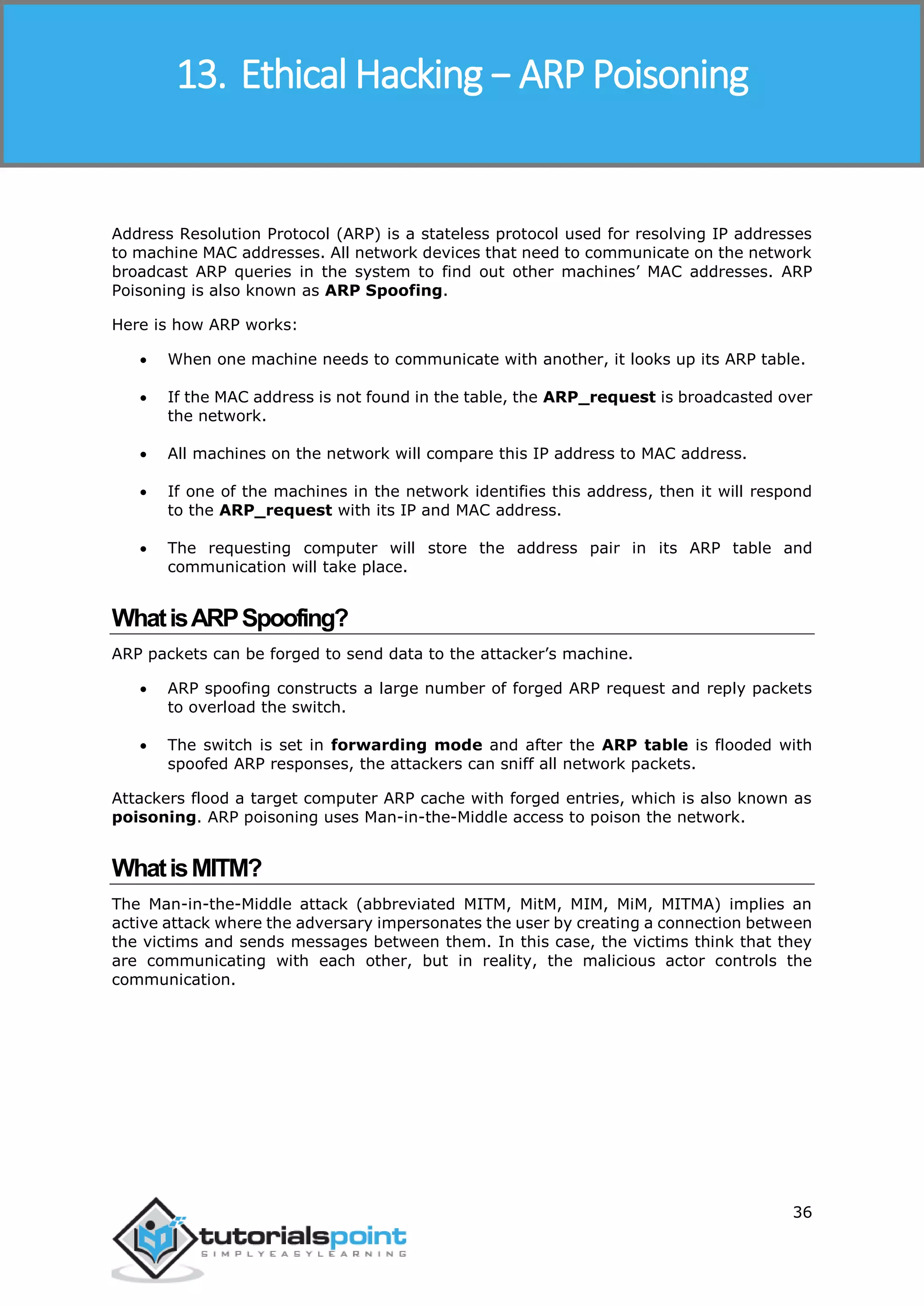



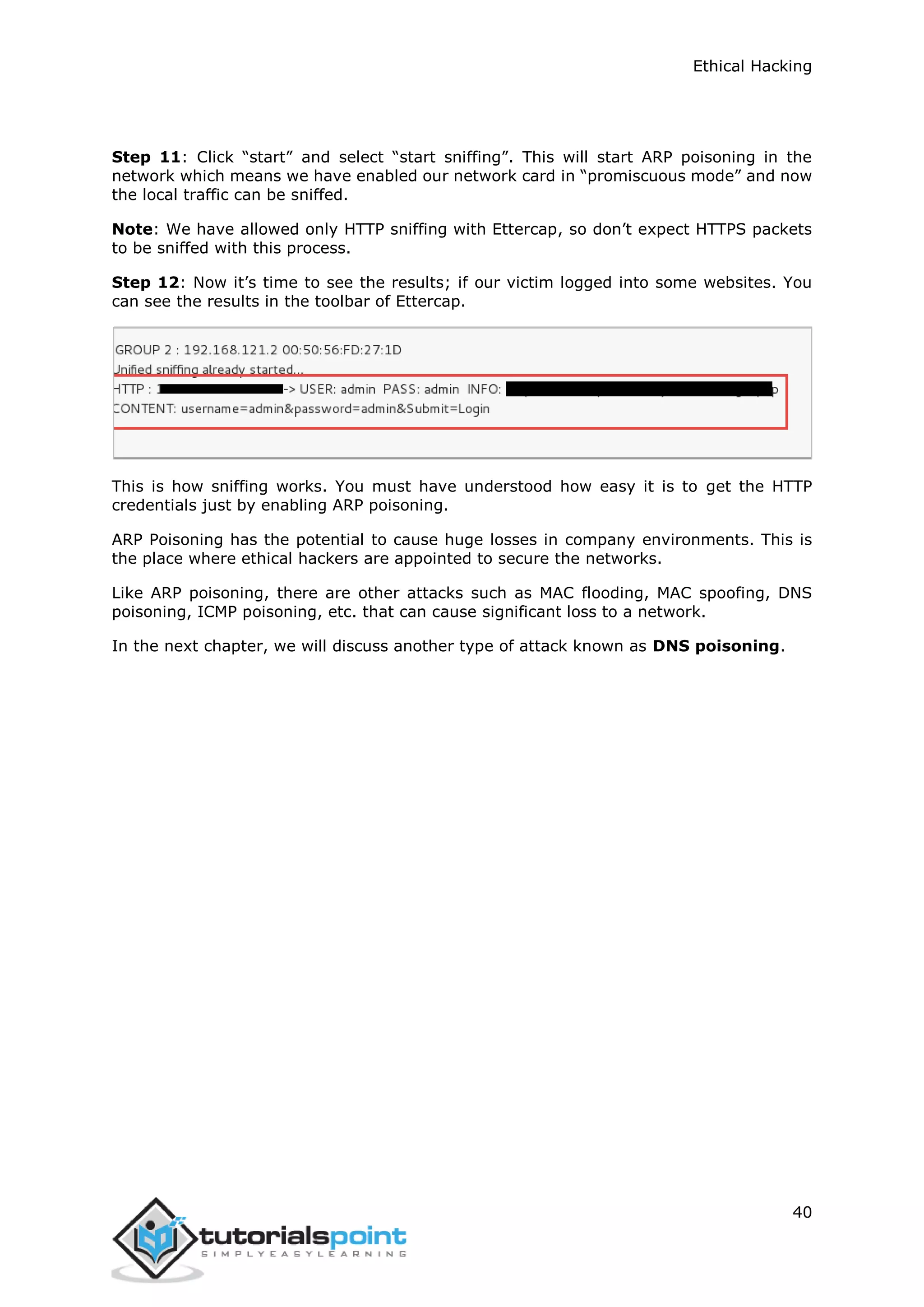

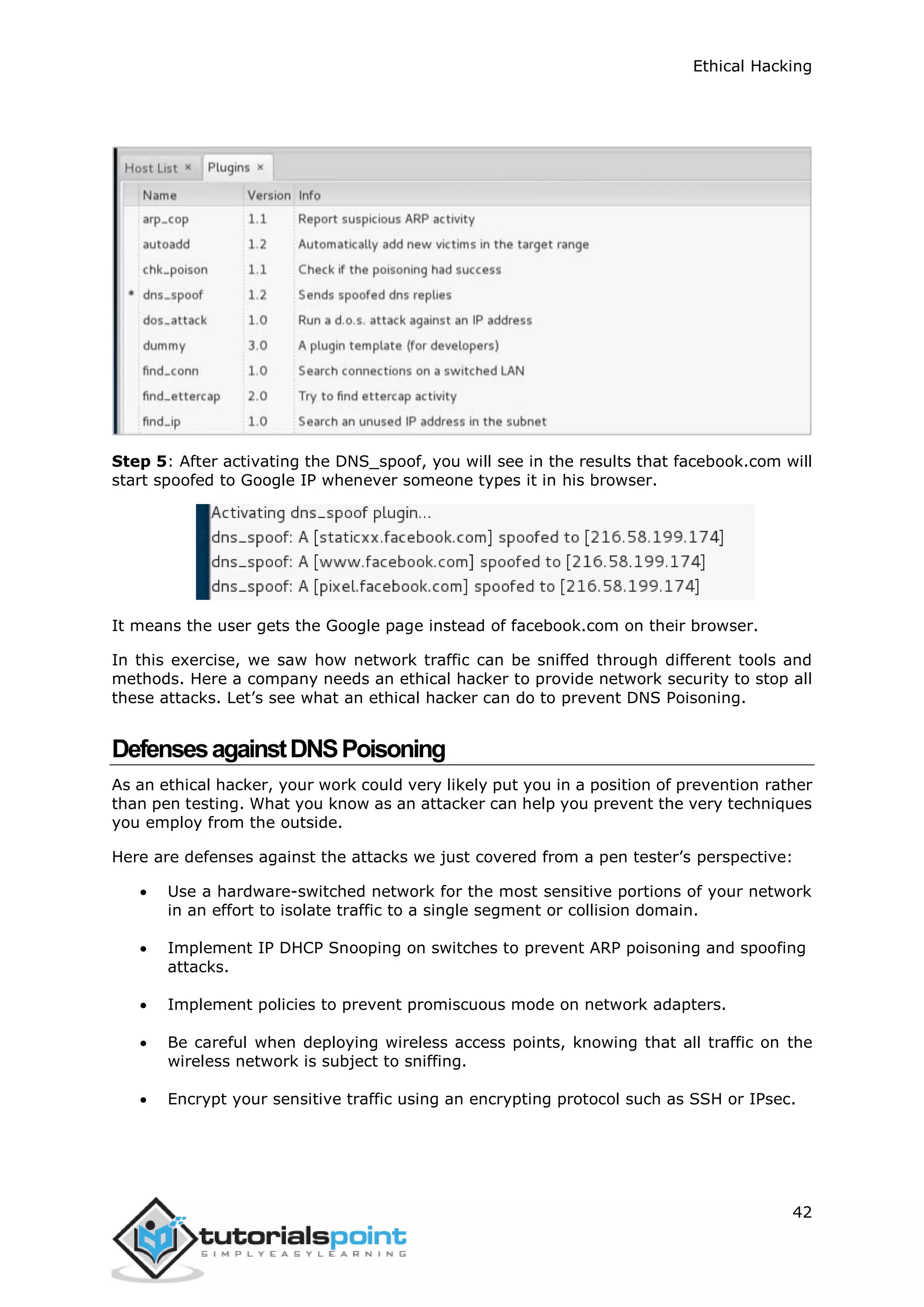
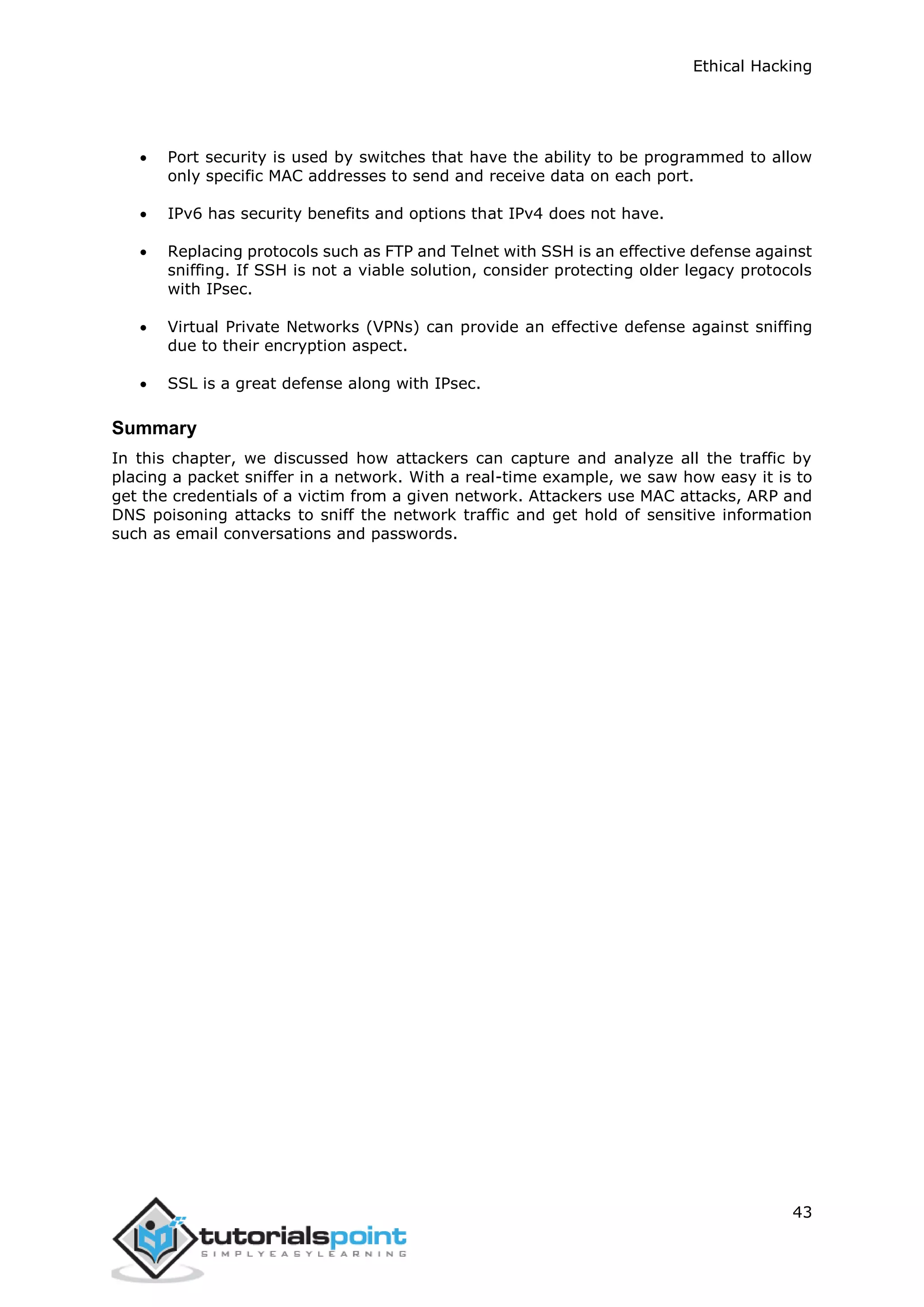

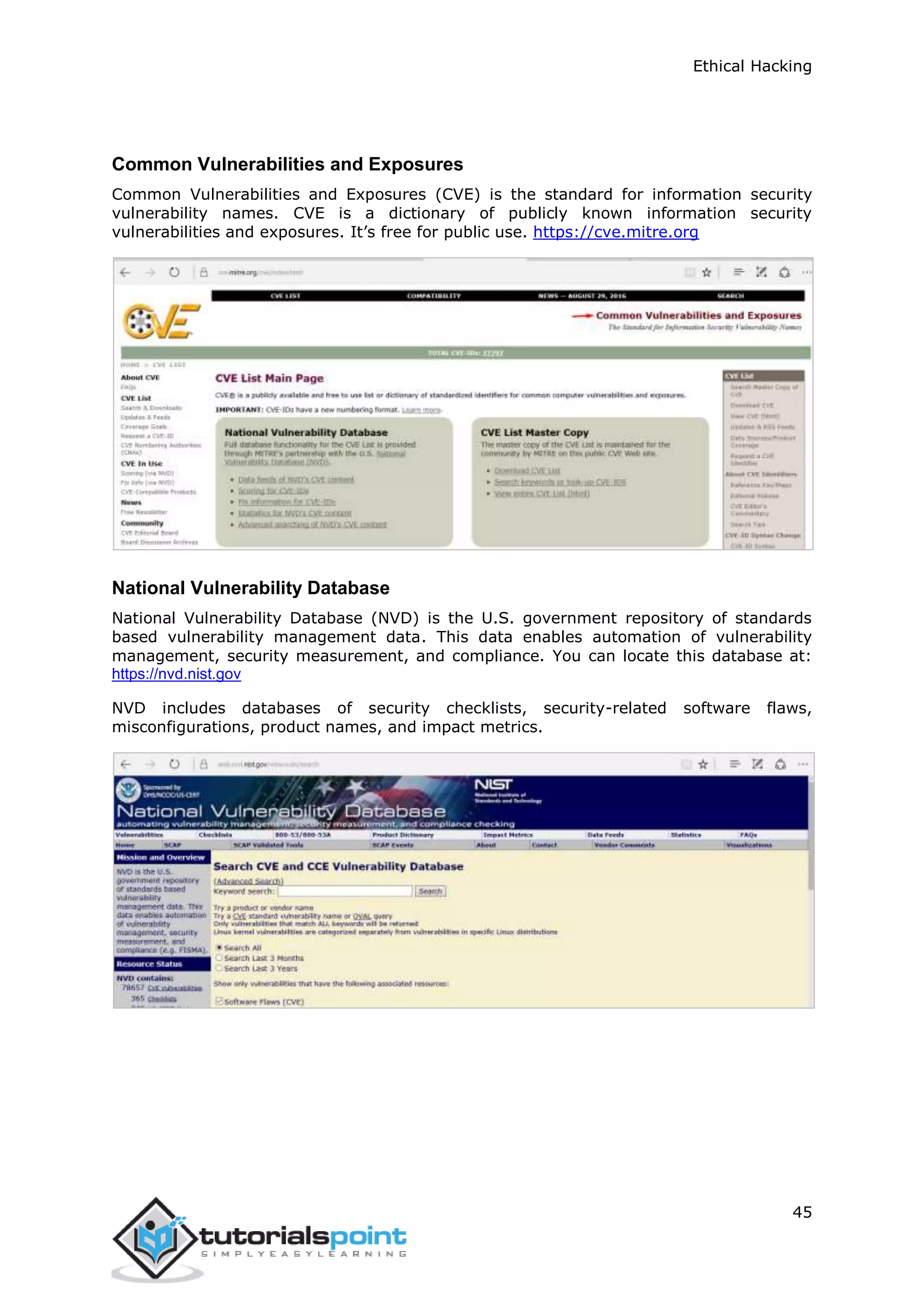
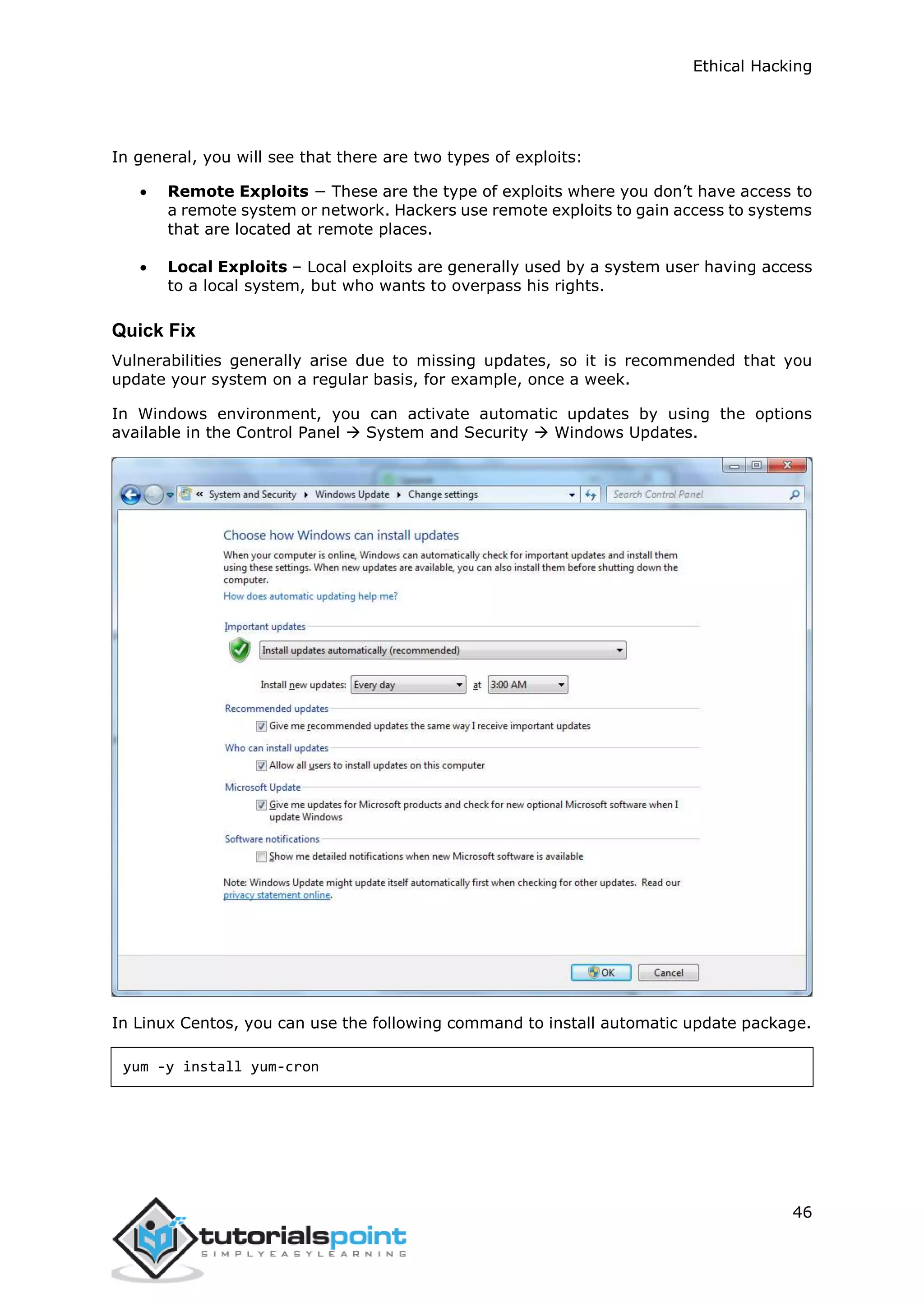
![Ethical Hacking
47
Enumeration belongs to the first phase of Ethical Hacking, i.e., “Information Gathering”.
This is a process where the attacker establishes an active connection with the victim and
try to discover as much attack vectors as possible, which can be used to exploit the
systems further.
Enumeration can be used to gain information on:
Network shares
SNMP data, if they are not secured properly
IP tables
Usernames of different systems
Passwords policies lists
Enumerations depend on the services that the systems offer. They can be:
DNS enumeration
NTP enumeration
SNMP enumeration
Linux/Windows enumeration
SMB enumeration
Let us now discuss some of the tools that are widely used for Enumeration.
NTP Suite
NTP Suite is used for NTP enumeration. This is important because in a network
environment, you can find other primary servers that help the hosts to update their times
and you can do it without authenticating the system.
Take a look at the following example.
ntpdate 192.168.1.100
01 Sept 12:50:49 ntpdate[627]: adjust time server 192.168.1.100 offset -
0.005030 sec
or
ntpdc [-ilnps] [-c command] [hostname/IP_address]
root@test]# ntpdc -c sysinfo 192.168.1.100
***Warning changing to older implementation
***Warning changing the request packet size from 160 to 48
system peer: 192.168.1.101
system peer mode: client
16. Ethical Hacking − Enumeration](https://image.slidesharecdn.com/afullethicalhackingcourse-211114035008/75/A-full-ethical-hacking-course-53-2048.jpg)
![Ethical Hacking
48
leap indicator: 00
stratum: 5
precision: -15
root distance: 0.00107 s
root dispersion: 0.02306 s
reference ID: [192.168.1.101]
reference time: f66s4f45.f633e130, Sept 01 2016 22:06:23.458
system flags: monitor ntp stats calibrate
jitter: 0.000000 s
stability: 4.256 ppm
broadcastdelay: 0.003875 s
authdelay: 0.000107 s
enum4linux
enum4linux is used to enumerate Linux systems. Take a look at the following screenshot
and observe how we have found the usernames present in a target host.](https://image.slidesharecdn.com/afullethicalhackingcourse-211114035008/75/A-full-ethical-hacking-course-54-2048.jpg)
